Today, Leica has announced its highly anticipated third-generation Leica Q all-in-one full-frame digital camera. The new Leica Q3 stays true to the concept embodied in the popular Leica Q2, while adding some welcome and innovative updates. The new model keeps the same basic exterior styling and exceptional 28mm f/1.7 Summilux ASPH lens with macro mode, but gets some serious upgrades under the hood, along with a few interface tweaks.
Inside, a new 60-megapixel BSI CMOS sensor paired with a next-generation Maestro IV processor turns out images with 14-stops of dynamic range, with the option of variable resolution DNG files along with expanded digital zoom options. Equipped with a massive 8GB of buffer memory, the Q3 can crank out up to 15 fps bursts. The Live View experience is enhanced further, with both a refreshed 5.76 million dot OLED EVF and tiltable 1.84 million dot rear LCD touchscreen.
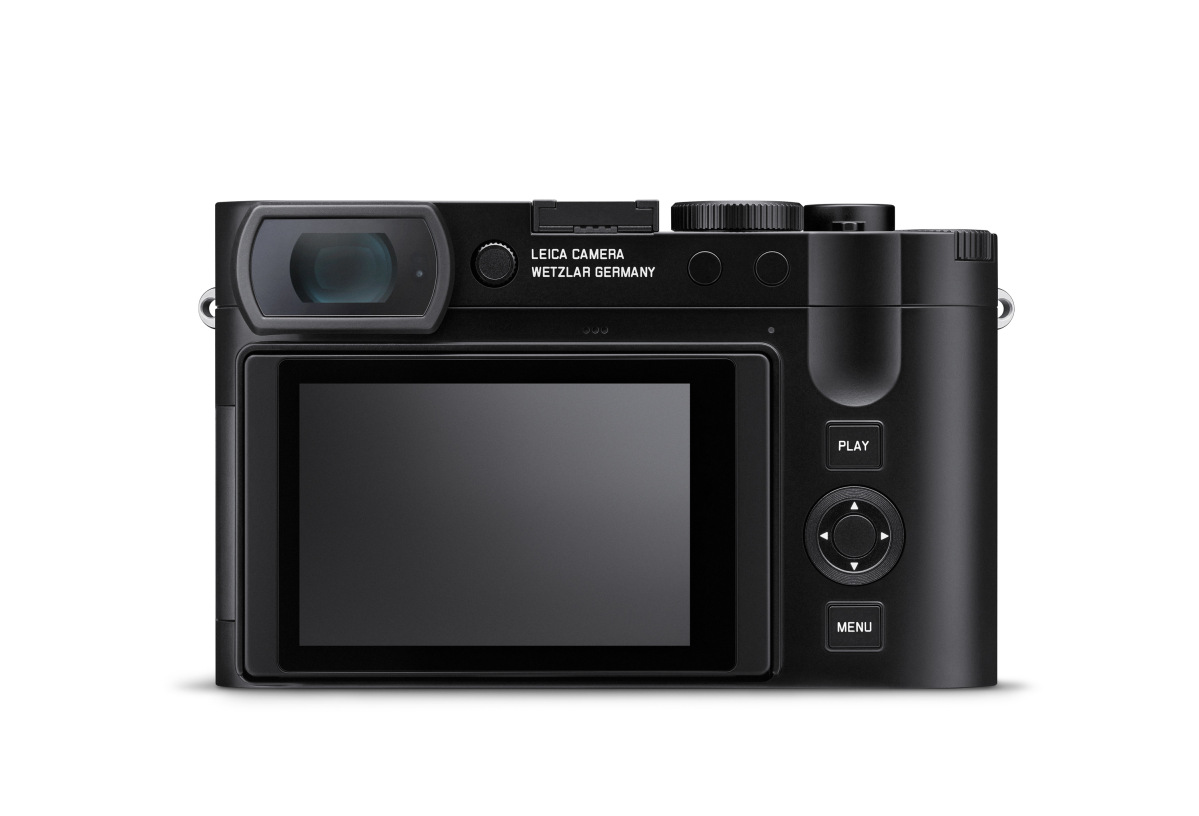
The autofocus system is all new, featuring a hybrid approach using both contrast and phase detection, meaning quicker and more precise focus. For video users, the Q3 becomes the first camera in the Leica portfolio to offer up to Cine8K recording and ProRes support. The added USB-C port allows for in-camera charging and data transfer, while the HDMI connector enables the use of external video recorders.
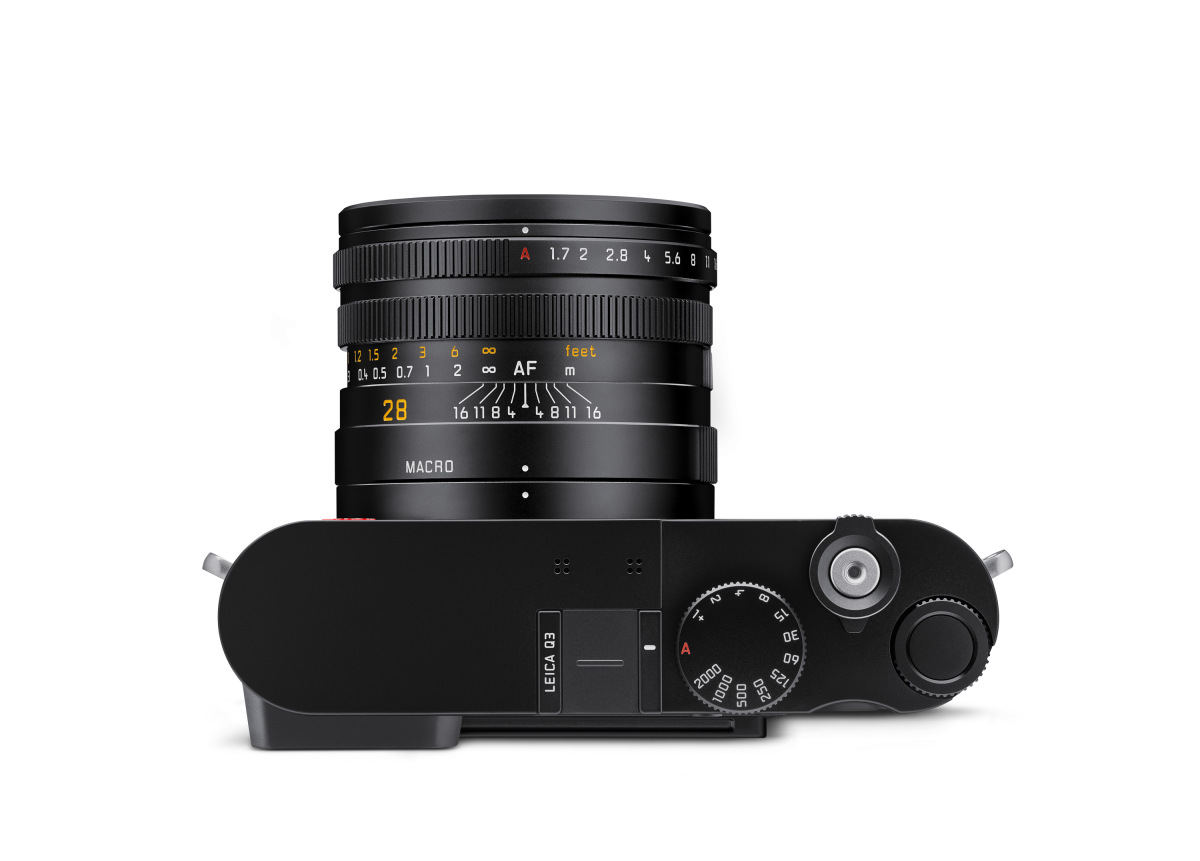
60 Megapixel BSI CMOS Sensor
Headlining the changes, the Leica Q3 is now packing a cutting-edge 60 megapixel BSI CMOS sensor. With an ISO range of 50-100,000 and 14-stops of dynamic range, this chip delivers next-level image quality.And if it's anything like the one in the M11, expect a bump in low light performance along with the increased resolution. This is made possible by utilizing BSI technology.
Back Side Illuminated sensors move the supporting electronics to the rear of the chip, allowing for significantly more photosensitive surface area and shallower pixel wells, resulting in no sacrifice versus a lower-resolution traditional design sensor with electronics in the top or middle substrate layers.
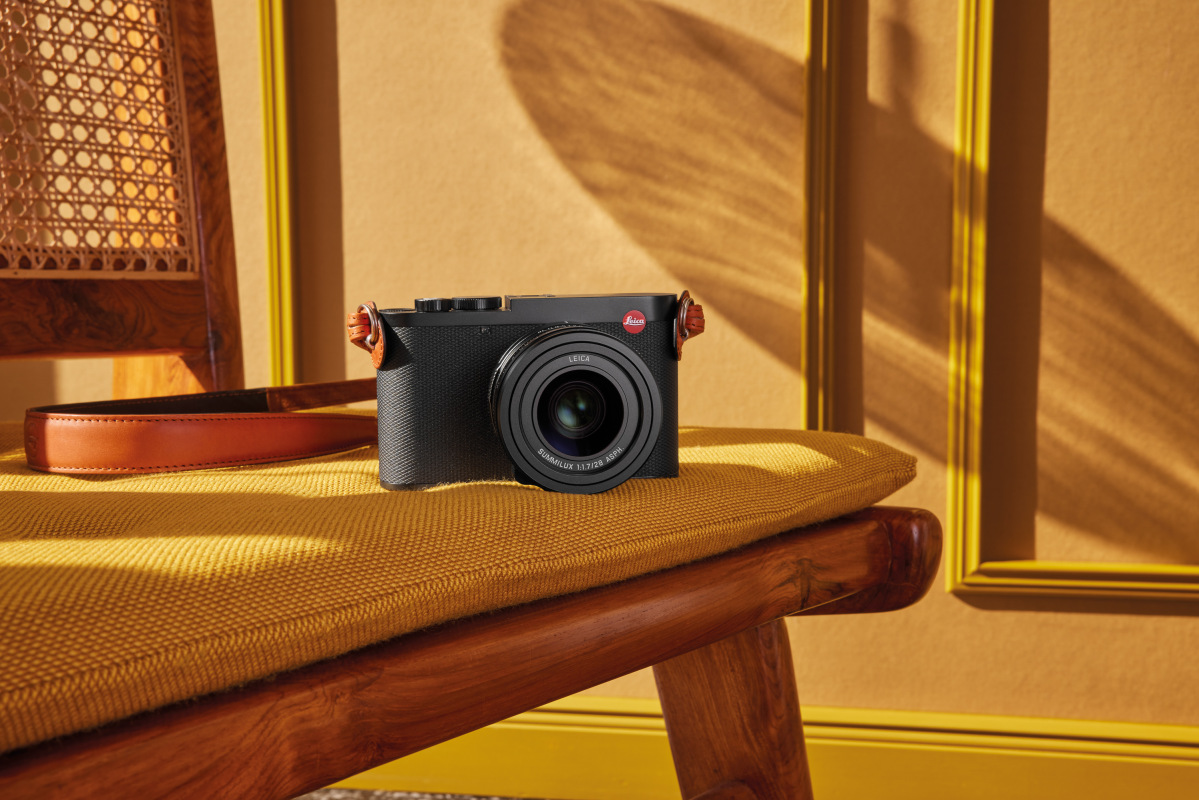
With the increase in pixel count, Leica has expanded the digital crop modes from 35mm up to a 90mm equivalent. While the resulting 6MP images at 90mm might be a bit light on pixels, the 39MP for the 35mm is not. Even 19MP at 50mm equivalent is quite usable. If you do use the crop modes, the on-screen review will show the cropped images, but rest assured that the DNG recorded to the SD card still contains the uncropped, full image off the sensor so you can tweak later.
Triple Resolution
Also borrowed from its M counterpart, the Q3 now offers triple resolution technology. Select L-DNG for full 60MP images, M-DNG for 36MP and S-DNG for 18MP files. While dropping the resolution of the sensor won't results in any improvement to low light ability, it will reduce file size and increase burst depth. Just as in the M11 and M11 Monochrom, we generally recommend sticking with full-res L-DNG for highest image quality.
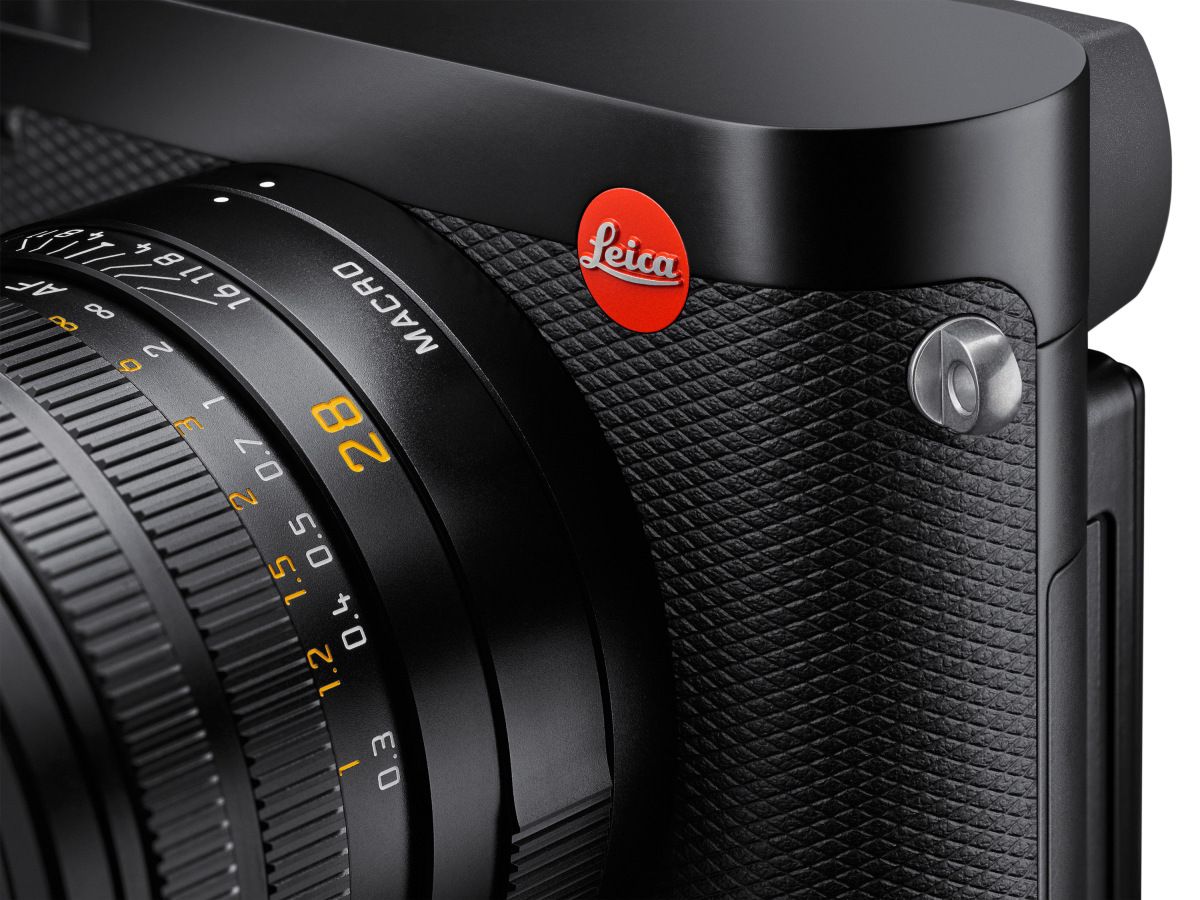
Maestro IV Processor + 8GB Buffer
Making its debut, the next-generation custom Maestro IV processor boasts some serious horsepower. The Q3 ups the already-decent 10 fps maximum burst rate of the Q2 to a blazing 15 fps, despite the resolution increase. And with a generous 8GB of buffer memory, expect burst depths between 63 images at full bore up to 164 shots when shooting at a more modest 2 fps. Regardless of how you shoot, you'll never have to wait for the camera to keep up.
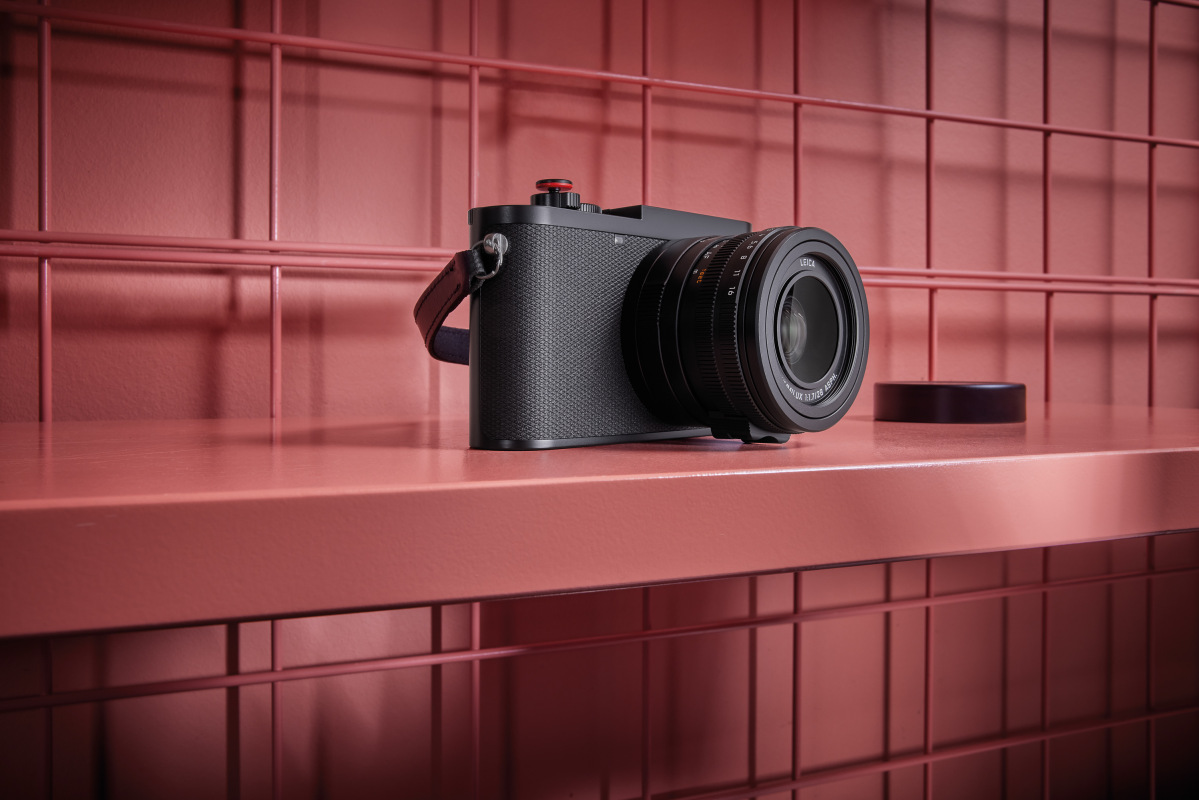
Upgraded video with up to Cine8K
Now possible with the beefy new processor and BSI sensor, the Leica Q3 is the first in the lineup to shoot 8K video. And not just standard 16:9 8K. The Q3 can film in the more cinematic 17:9 Cine8K in 10-bit. For those not up on video standards, this means that the diminutive Q3 can record a whopping 35 megapixels at 30 frames per second. If 8K is overkill, the camera supports C4K up to 60fps and FullHD up to 120fps. And while currently limited to FullHD, the Q3 is also the first Leica to record internally to ProRes 422HQ.
New Autofocus with Contrast and Phase Detection
Debuting on the Q3 is an all-new hybrid autofocus system. Employing both traditional contrast detection as well as a phase detect with 315 fields, depth mapping and AI-driven subject recognition, the AF is faster and more accurate than ever. Eye/Face/Body + Animal Detection works remarkably well, and assures sharp focus even for moving subjects.
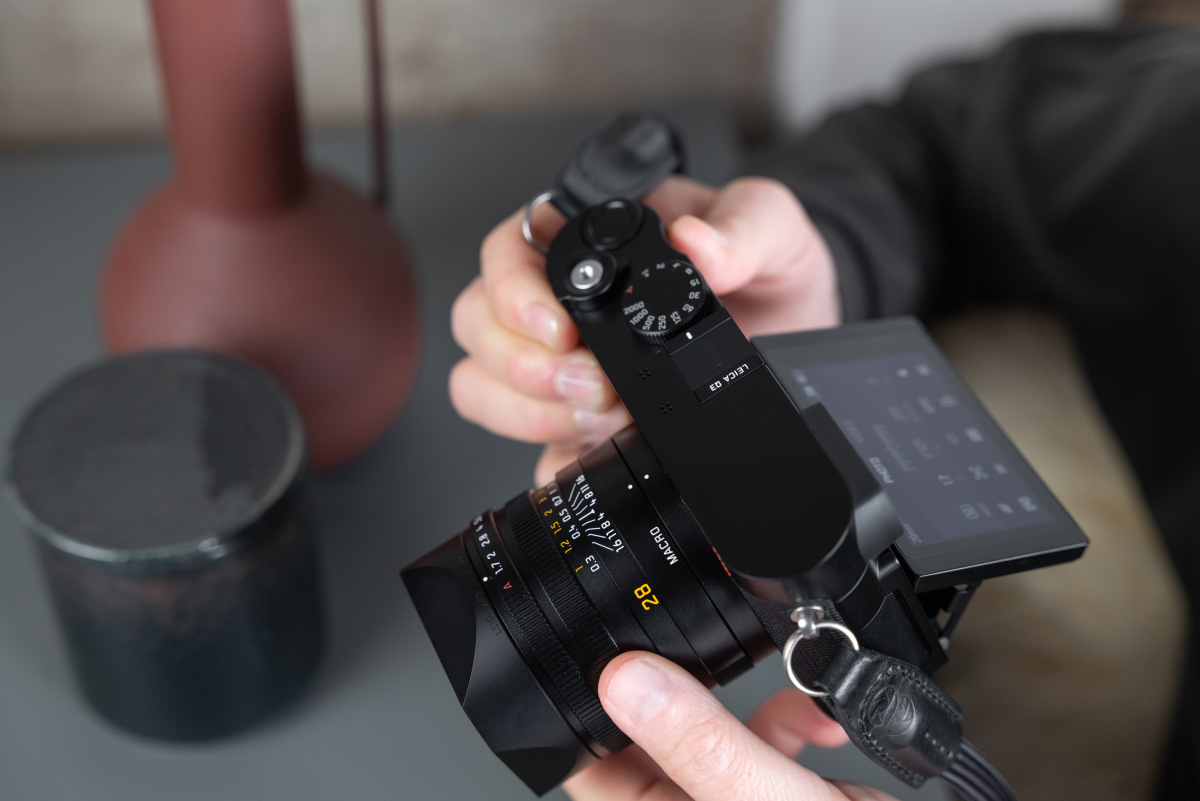
New EVF
With a 56% increase in resolution, the new built-in 5.76 million dot OLED EVF is simply stunning. Crisp, clear and smooth, the viewfinder manages to provide an SL2-level experience in a significantly smaller package. And with a 120fps refresh rate, generous eye relief, and easy-to-set diopter the EVF is one of the most notable upgrades.
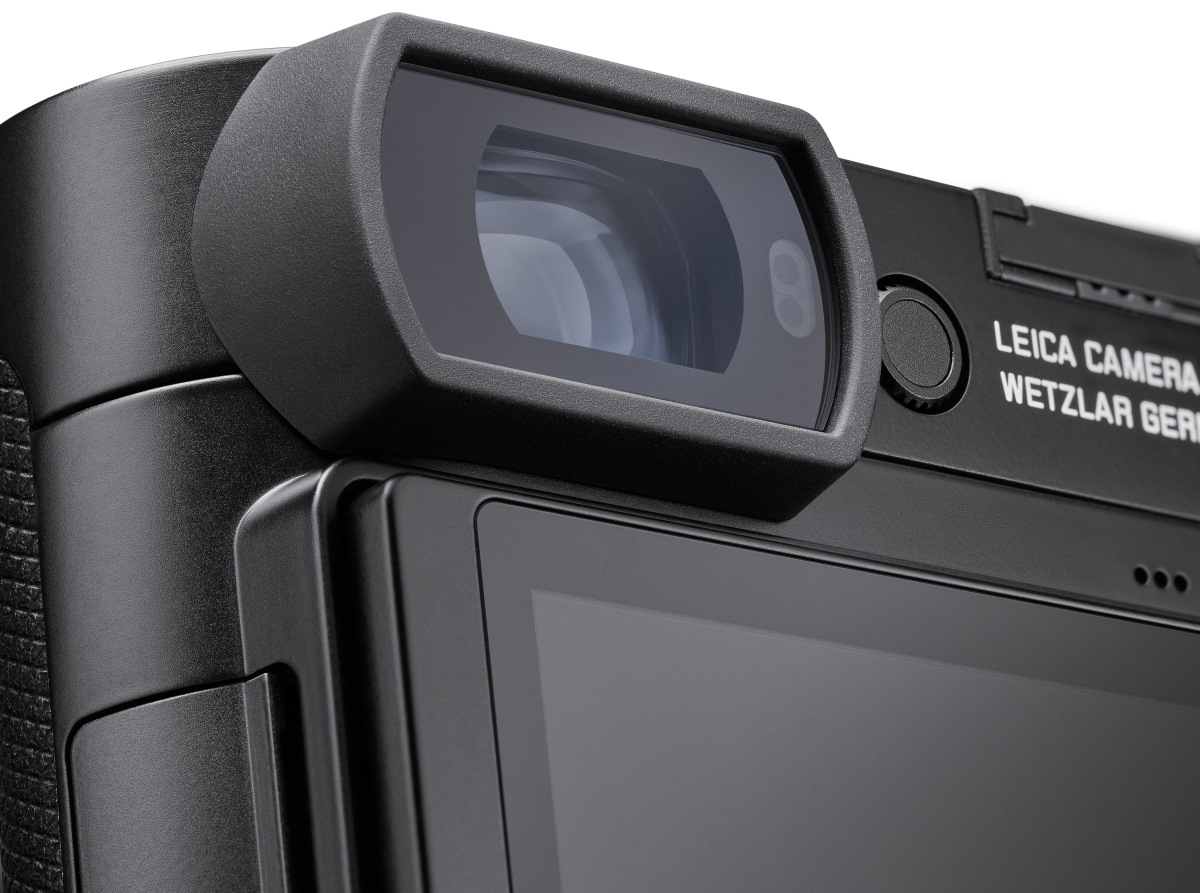
New tiltable rear LCD screen
In a major departure for Leica, the Q3 now sports an articulating rear LCD. Titling upwards and downwards, the screen offers additional flexibility for off-angle shooting. Whether holding overhead or close to the ground, the screen proves to be a useful addition. The LCD touch panel itself gets upgraded as well, now clocking in at 1.84 million dots, a 76% bump from the Q2.
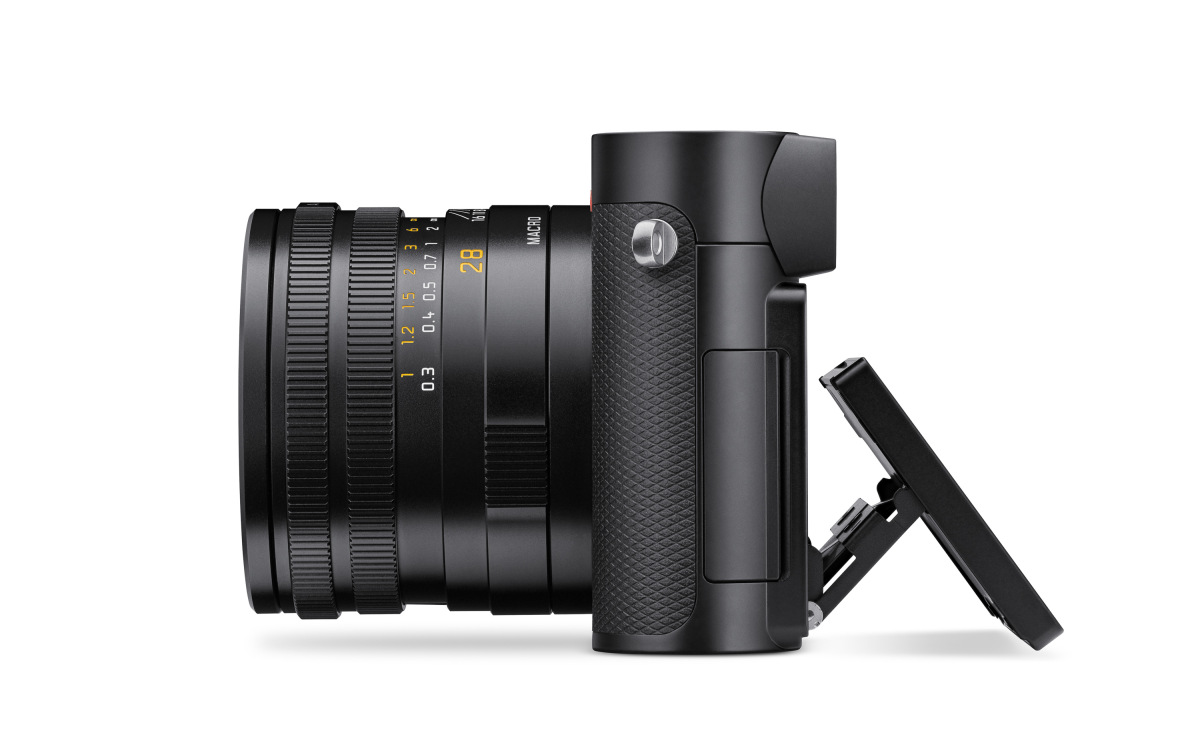
Revised control layout
In order to accommodate the new titling screen mechanism, the left-side buttons have been eliminated and moved to the right of the screen. Now just a PLAY button and MENU button flank the top and bottom of a four-way direction pad with central FN button.
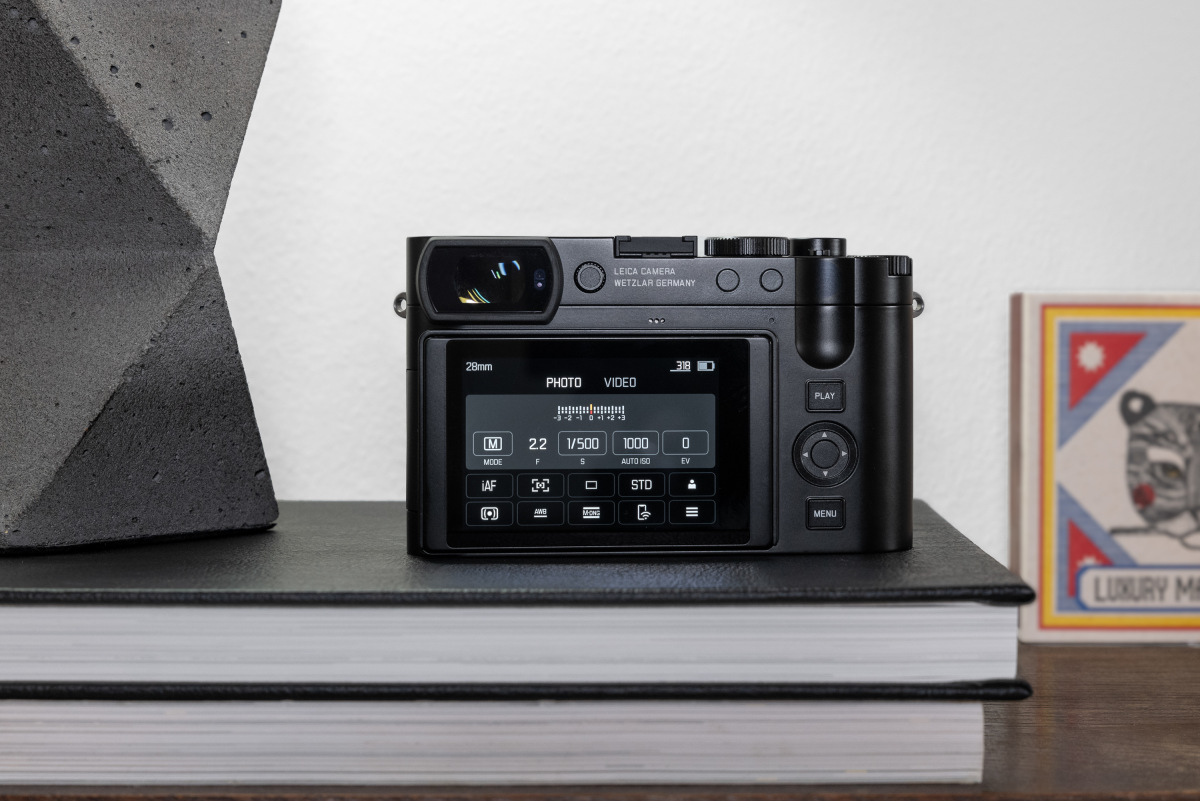
But even though it appears there is less tactile elements, Leica has expanded the number of custom function buttons to four. In addition to the central one in the D-Pad, there are two at the top rear and one in the middle of the top thumb dial. As with all other Leica models, a long press on any of these buttons lets you set the function, with a short press to activate. While the change of layout will take some getting used to, the Q3 truly offers single-handed use with all buttons falling under your right thumb. Also noteworthy is the inclusion of a threaded shutter release, which means you can customize your Q3 with a wide variety of soft releases – just like an M.
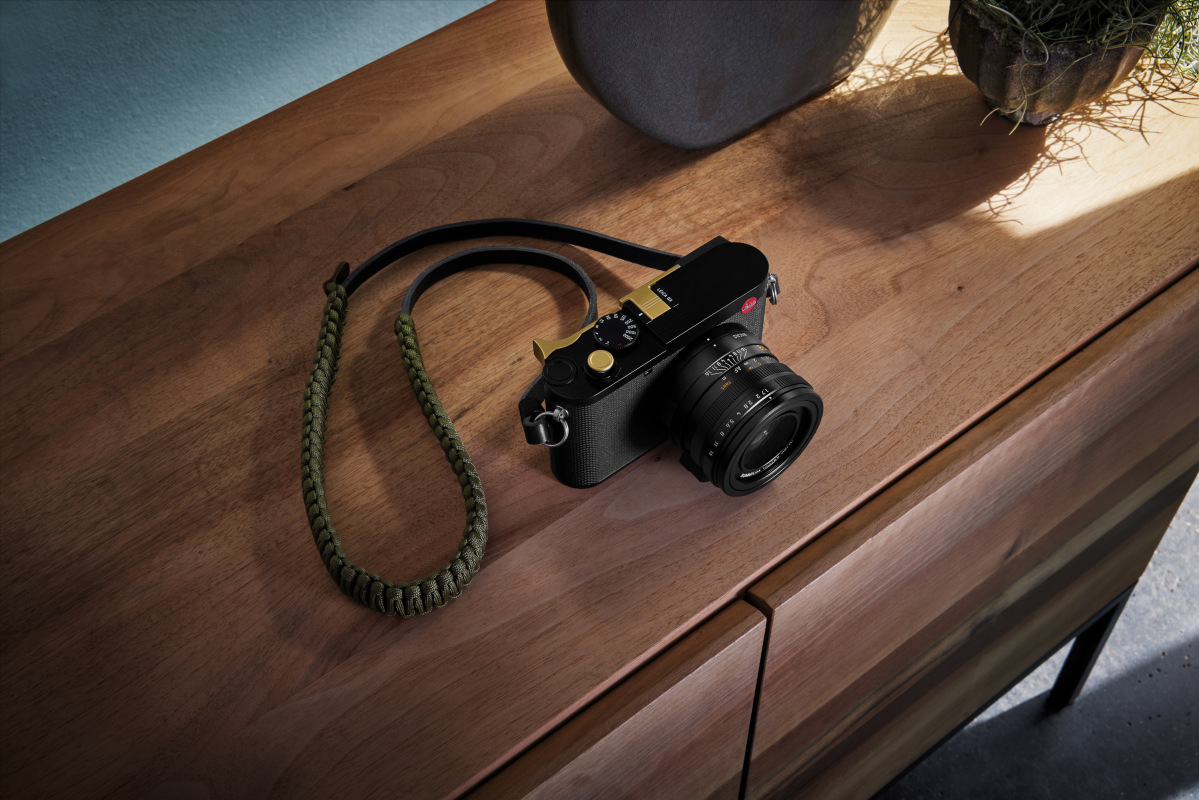
USB-C and HDMI Ports
The Q3 brings back physical connections to the Q System. An HDMI (Type-D) port gives options for recording video to an external recorder or capture device, like using the Q3 as a B/C cam in studio, as a lightweight gimbal-mount camera or maybe just as a really nice webcam for Zoom calls.
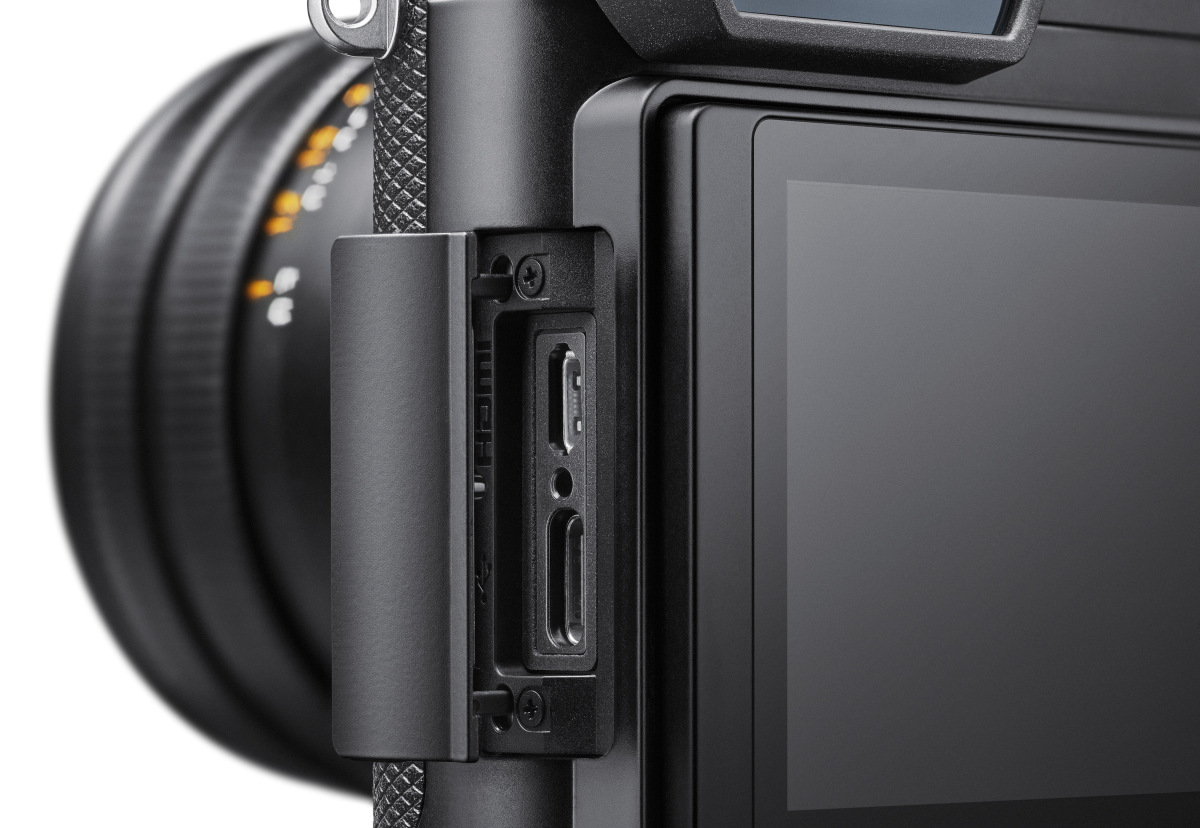
And just as with the M11, the USB-C port allows for charging on the go with a portable powerbank, using the camera as a second charger while traveling or for transferring photos to a computer or Apple mobile device. Supplied with a certified MFi USB-C to Lightning cable, transferring photos to an iPhone or iPad with the Leica FOTOS app is quick and easy. Or use a standard USB 3.1 Gen 2 cable to connect to a computer, either in PTP mode for tethered shooting or in Mass Storage to copy files directly to Windows or Mac.
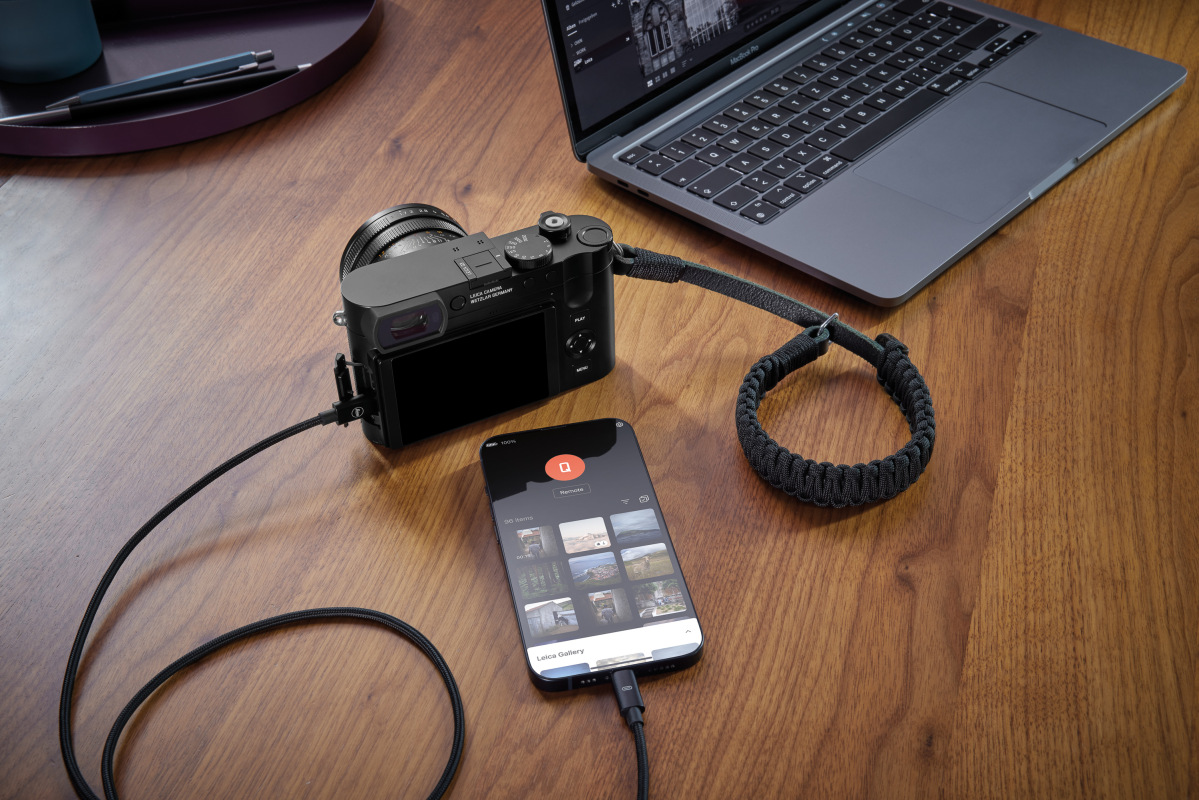
Upgraded Wi-Fi Speed
But you don't need a cable to enjoy rapid transfers to your mobile device. By incorporating MIMO beam forming technology, the Q3 boasts 10x faster wireless speeds. Where DNG files could take 20 seconds or more to transfer from the Q2, the Q3's even larger images take a mere two seconds. Even browsing all of your pictures on the SD card from FOTOS feels snappy and responsive.
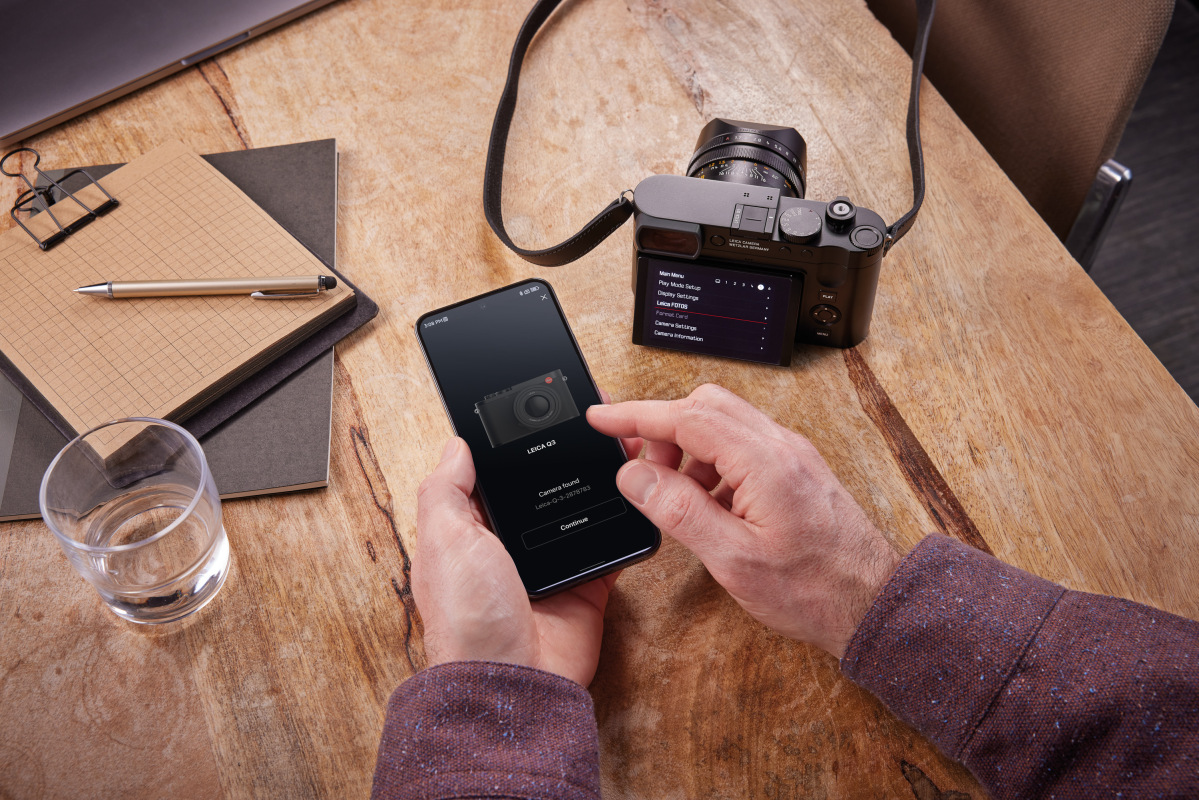
New Wireless Charging
Along with charging over USB-C, by using the Q3's optional handgrip accessory, the camera can be charged wirelessly on a Qi inductive charging mat. Designed with convenience in mind, the Q3 can be left on its charging mat so it's always fully charged and ready for action.
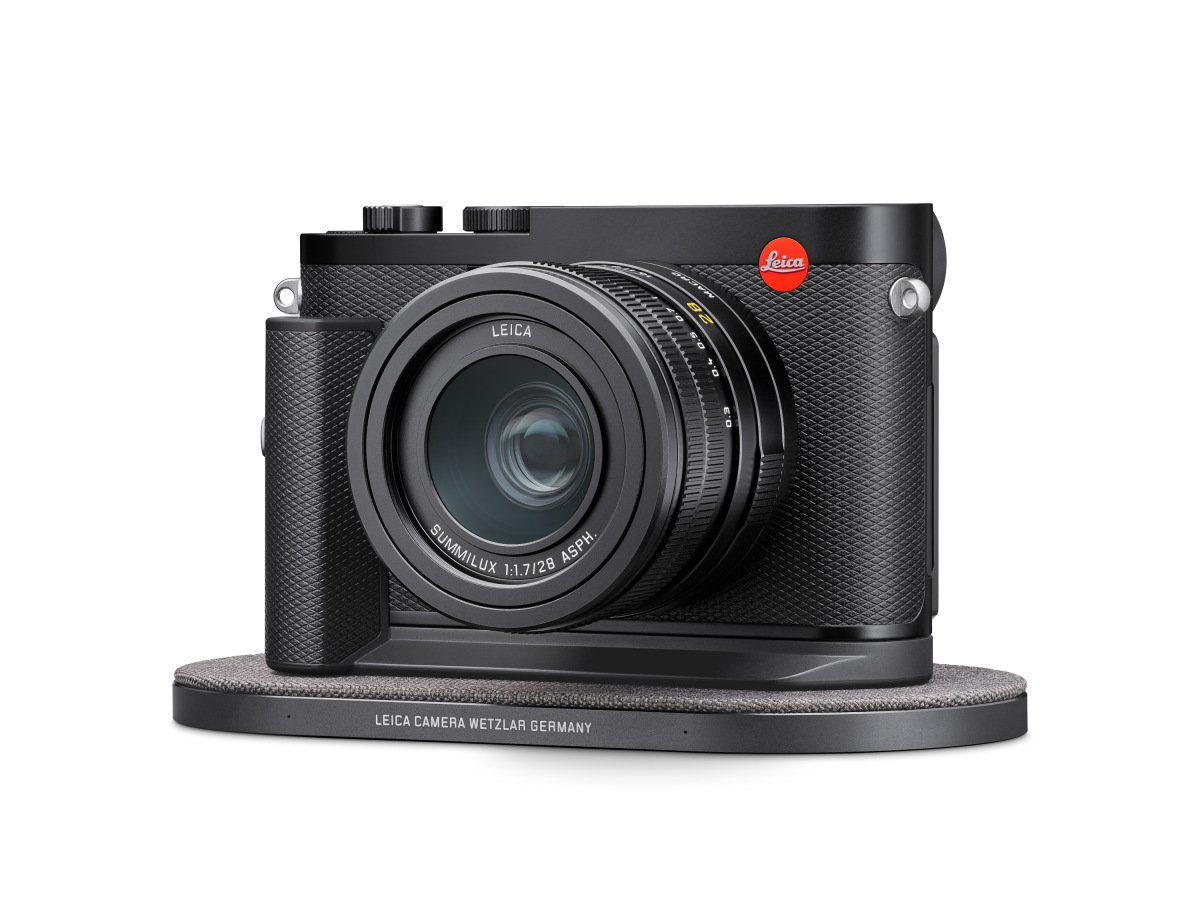
New Battery
Physically the same dimensions as the BP-DC4 used in the Q2 and SL2, the newly introduced BP-DC6 has 2200mAh on tap for the increased performance of the Q3. The camera is still backwards compatible with the previous 1860mAh battery, but will have reduced battery life and will limit video functions to 4K. We'd recommend upgrading to the new battery as it becomes available. And yes, the higher capacity BP-DC6 will work with the Q2, SL2, SL2-S and SL601.
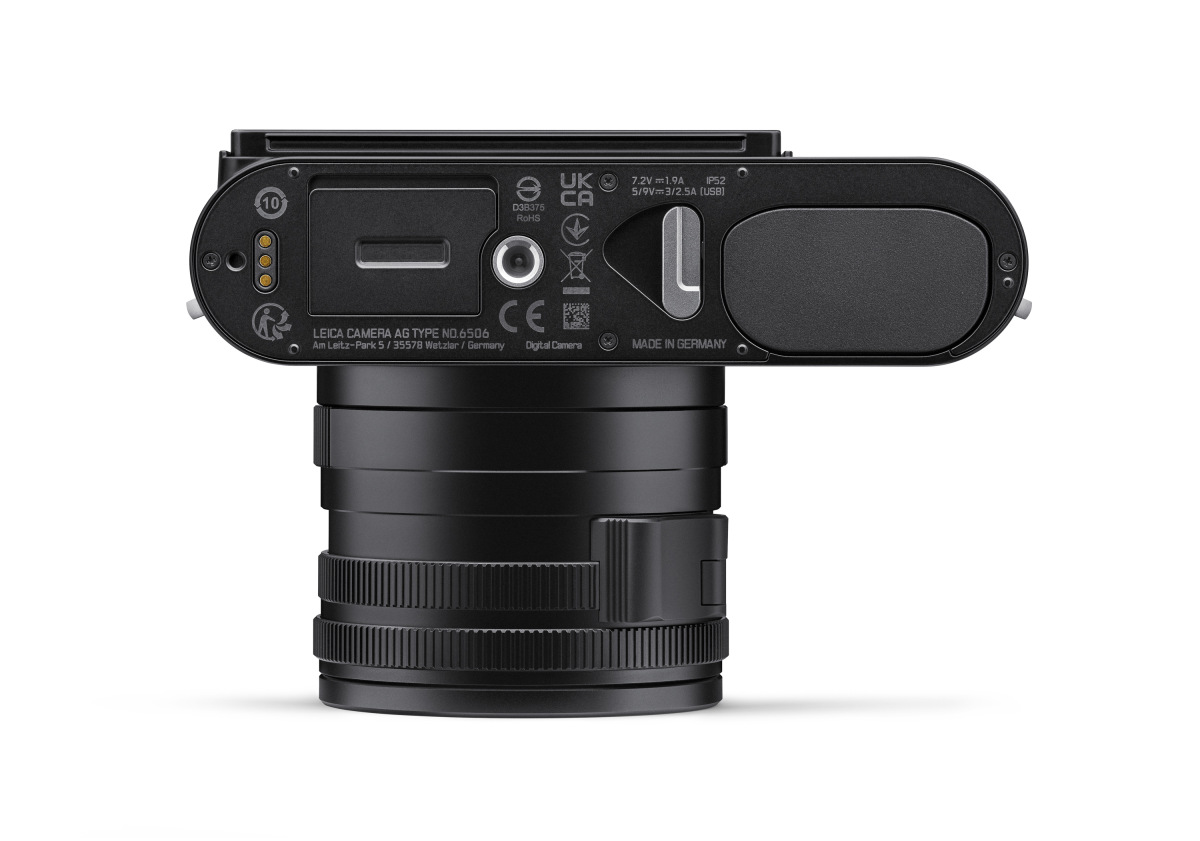
Summary of New Features
- First ever 60MP BSI CMOS Sensor with Triple Resolution Technology in a Leica Q camera, allowing for 14 stops of dynamic range and digital zoom options up to 90mm
- New Maestro IV Processor with 8GB of buffer memory
- New state of the art Hybrid Autofocus system with Contrast and Phase Detection autofocus with eye, face, body and animal tracking
- New tiltable backscreen with 76% increase in resolution compared to the Leica Q2
- New EVF with 56% increase in resolution compared to the Leica Q2, now identical resolution and framerate as the Leica SL2 & SL2-S viewfinders
- New Ports: HDMI for video recording & USB-C for charging and data transfer
- 8K resolution output and ProRes video support
- New battery with 18% more power than previous generation
- First ever full-frame camera with wireless charging capabilities
- 10x faster wireless transfer speeds to the Leica FOTOS app with embedded MIMO Technology
- IP52 Weather Sealing Certification
- New Accessories to customize the look and feel of the Leica Q3
- Handmade in Germany
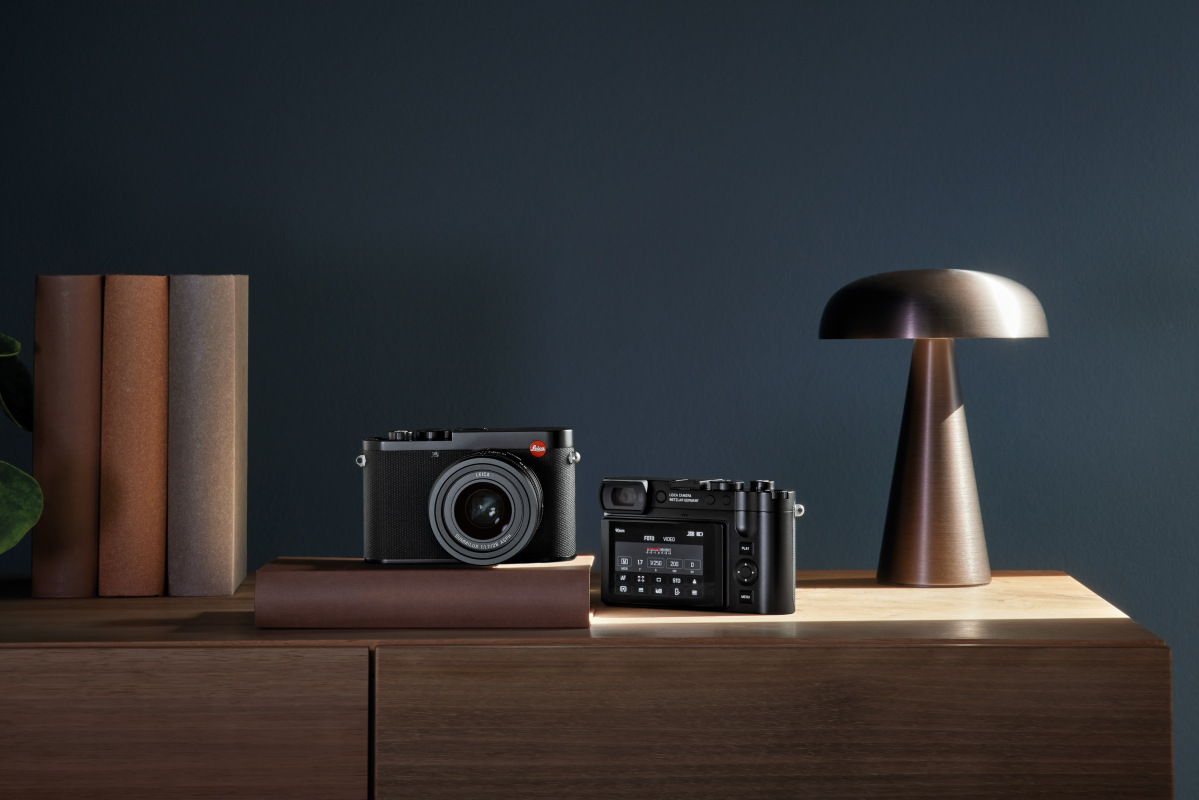
Pricing, Availability and Ordering
Initial deliveries of the Leica Q3 will start within the next week for a price of $5,995. As with any major Leica camera launch, supply will be extremely limited for a number of months. If you are interested in ordering the Q3, you can do so at Leica Store Miami by clicking the button below, calling 305-921-4433 or sending an email to info@leicastoremiami.com. If you are interested in trading in any other Leica gear towards the purchase of the Q3, you can indicate so on the pre-order form.
Sample Images
Leica was nice enough to supply some sample images from the Q3. We'll be doing our own testing now that the camera is out, but after diving into these files, we're extremely impressed. Wonderful color and tonality. Exceptional detail and sharpness. And impressive high ISO results, even up to ISO 50,000. Be sure to click on the images to see a larger view.

1/1250th @ f/4, ISO 100
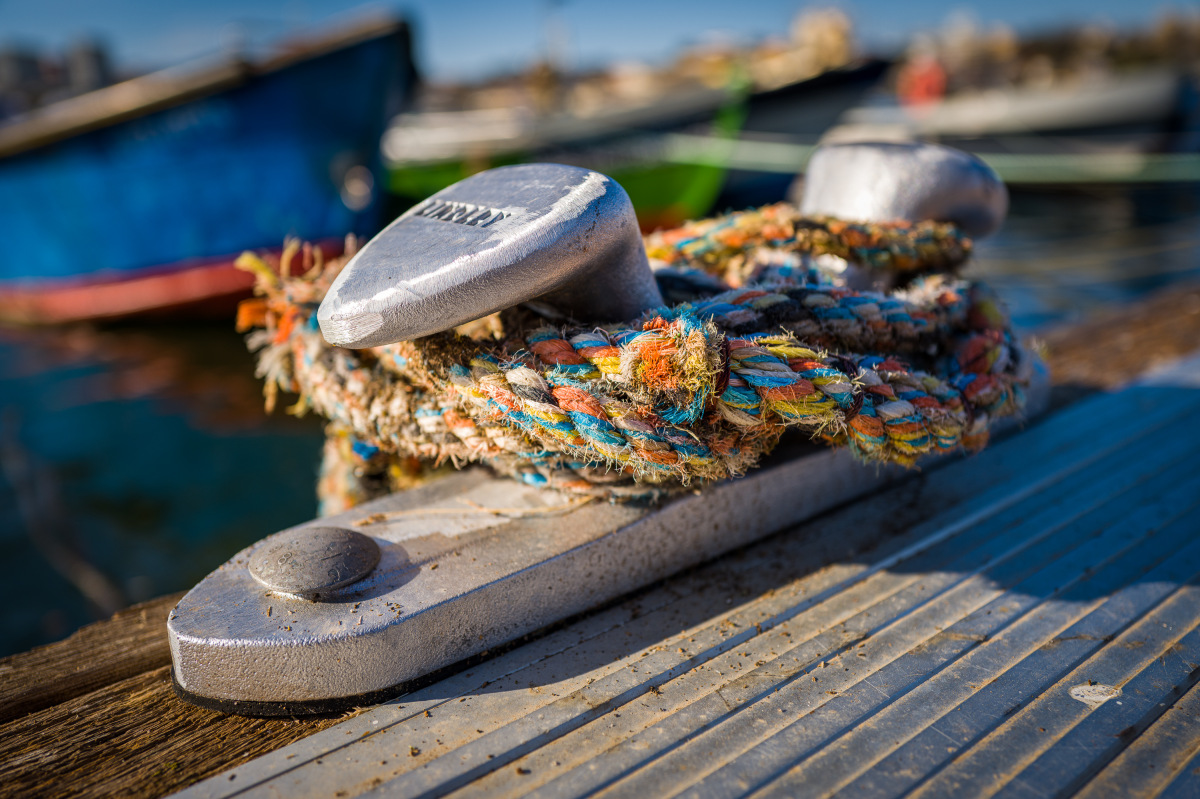
1/1250th @ f/2.8, ISO 100
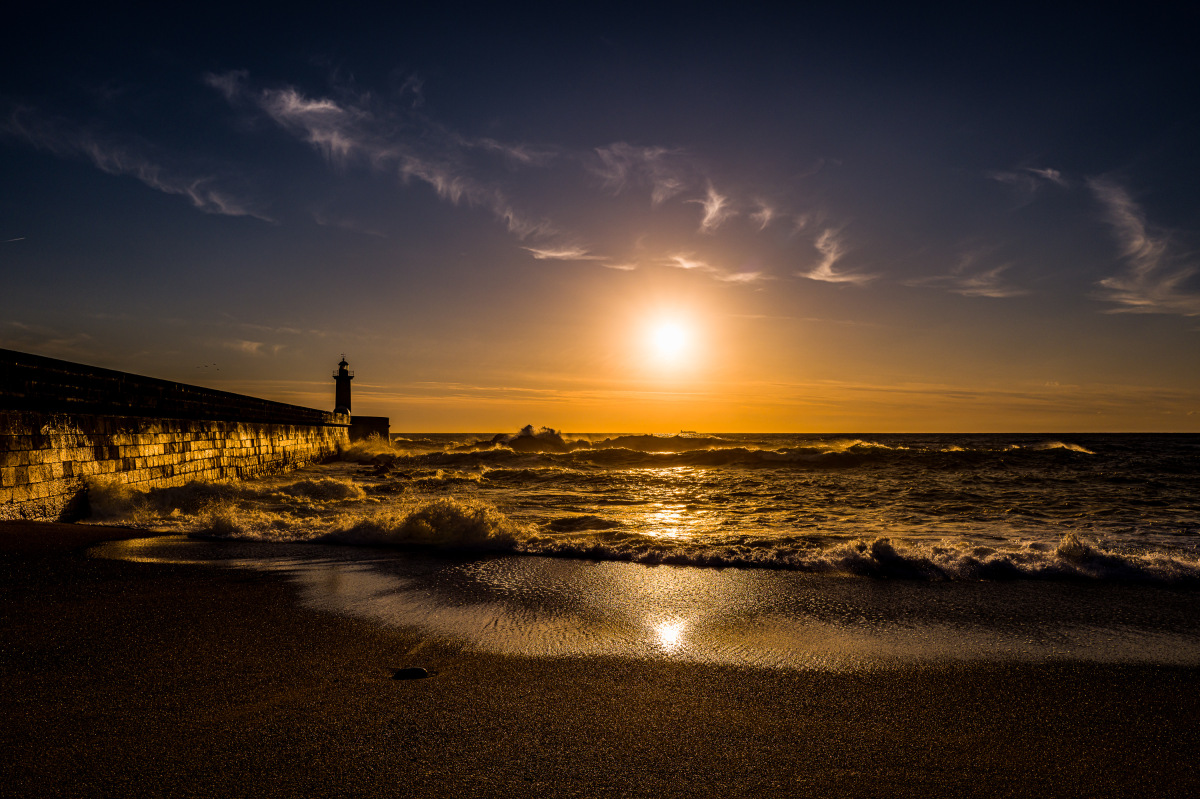
1/2500th @f/8, ISO 100
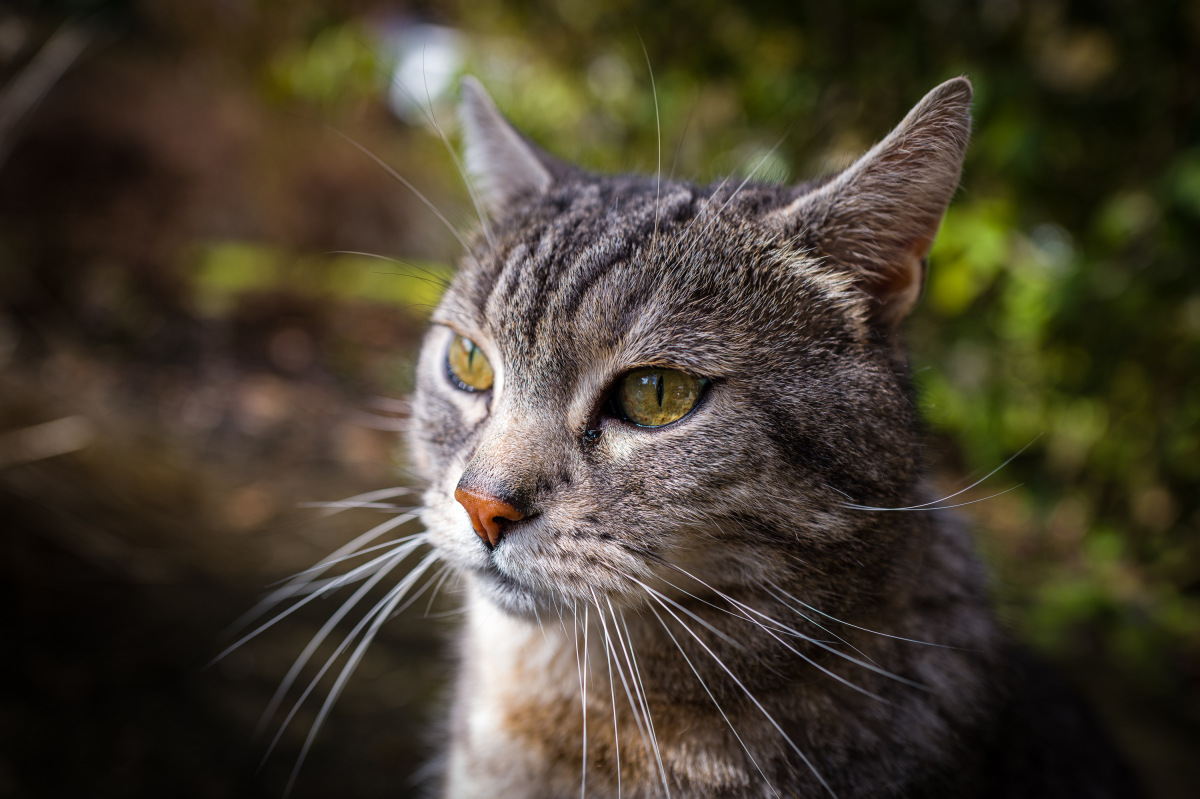
1/400th @ f/2.8, ISO 100
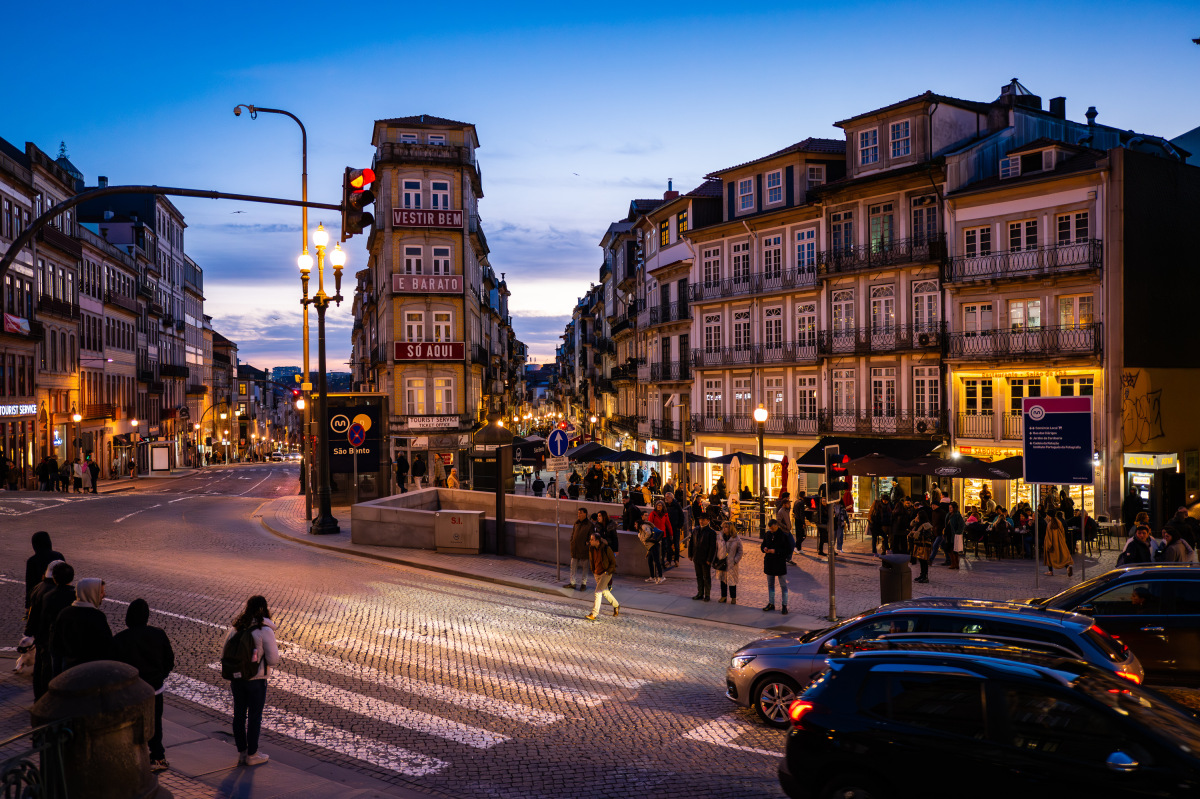
1/250th @ f/2, ISO 2500
Compared to Q2
| Leica Q3 | Leica Q2 | |
| Sensor | 60.3 MP CMOS BSI | 47.3 MP CMOS |
| Processor | Maestro IV | Maestro III |
| Digital Zoom | 28 / 35 / 50 / 75 / 90mm | 28 / 35 / 50 / 75mm |
| LCD Screen | 3“ TFT monitor (1.84 mil. pixel), touch, tiltable | 3“ TFT monitor (1.04 mil. pixel), touch |
| EVF | OLED, 0.5“ 4:3, 5.76mp | OLED, 0.5“ 4:3, 3.68mp |
| ISO Range | 50 – 100,000 | 50 – 50,000 |
| AF System | Contrast & Phase Detection AF, DFD | Contrast Detection AF |
| HDMI / USB-C | Yes (Type-D 2.0) / Yes (USB-C 3.1) | No / No |
| Inductive Charging | Yes, via optional handgrip | No |
| Battery | 2200mAh (BP-SCL6) | 1860mAh (BP-SCL4) |
| Variable Resolution | Yes | No |
| Video | FHD, 4k, C4K, 8K, MP4 + MOV, .h265, ProRes (1080p) | FHD, 4k, C4k, MP4 + MOV |
| Function Buttons | 4 | 2 |
| Bluetooth / MFI | Yes / Yes (10x faster transfers) | Yes / No |
Press Release
Leica Camera AG introduces the 3rd generation of the successful Leica Q cameras, the Leica Q3. High-quality craftsmanship, a timeless and sleek design, and simple operation make this family of fixed focal length full-frame cameras stand out. The new Leica Q3 camera delivers perfect photo and video results; equipped with one of the fastest lenses on the market with integrated macro mode and an extensive selection of new features, representing the next evolutionary step in this unique camera segment.
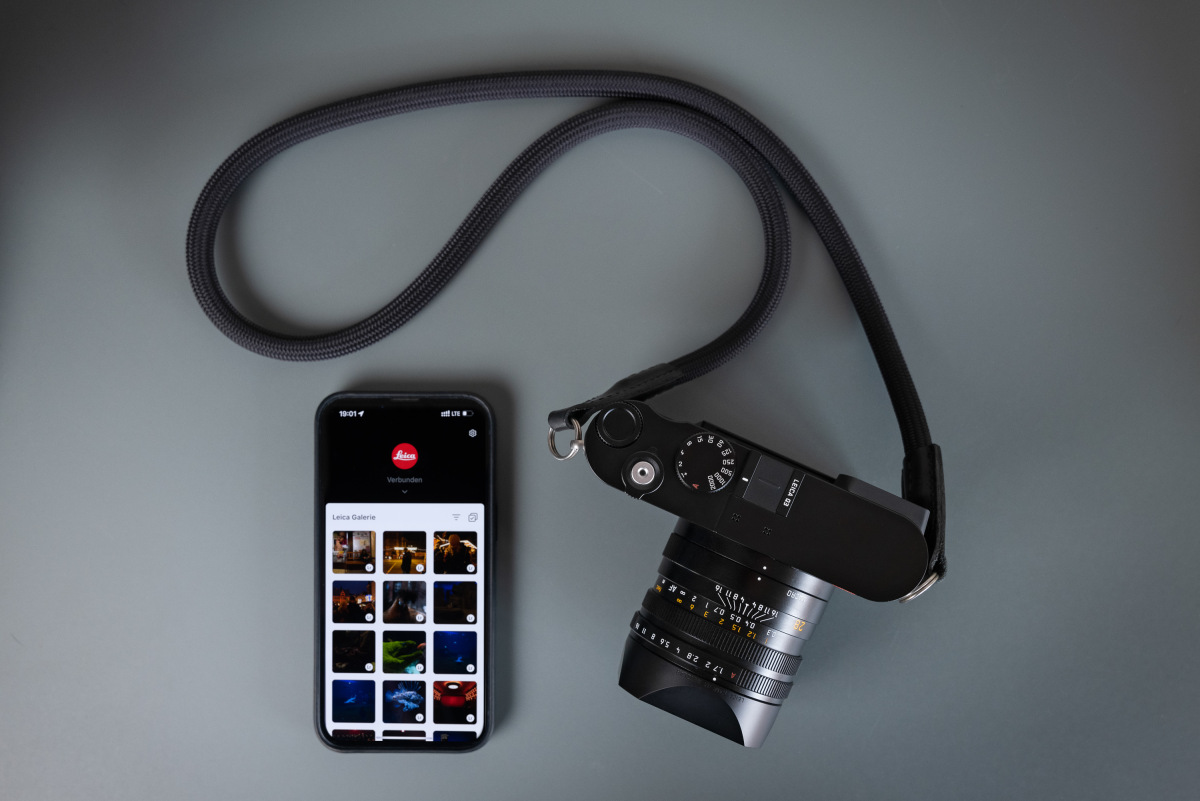
At the heart of the Leica Q3 is the new BSI-CMOS sensor with Triple-Resolution- Technology. With a choice of resolutions between 60, 36, or 18 MP, raw images can be created using the DNG format while JPEG files provide a perfect look, straight out of the camera. When shooting with 60 MP, even the finest details and structures are captured. Shooting with 36 or 18 MP allows faster camera operation, longer image sequences, and smaller file sizes. The Leica Q3 uses the entire size of the sensor for all resolutions with a sensitivity range of ISO 50 to 100,000, while the latest generation of the Maestro Series processor with L2 Technology ensures excellent operating speeds.
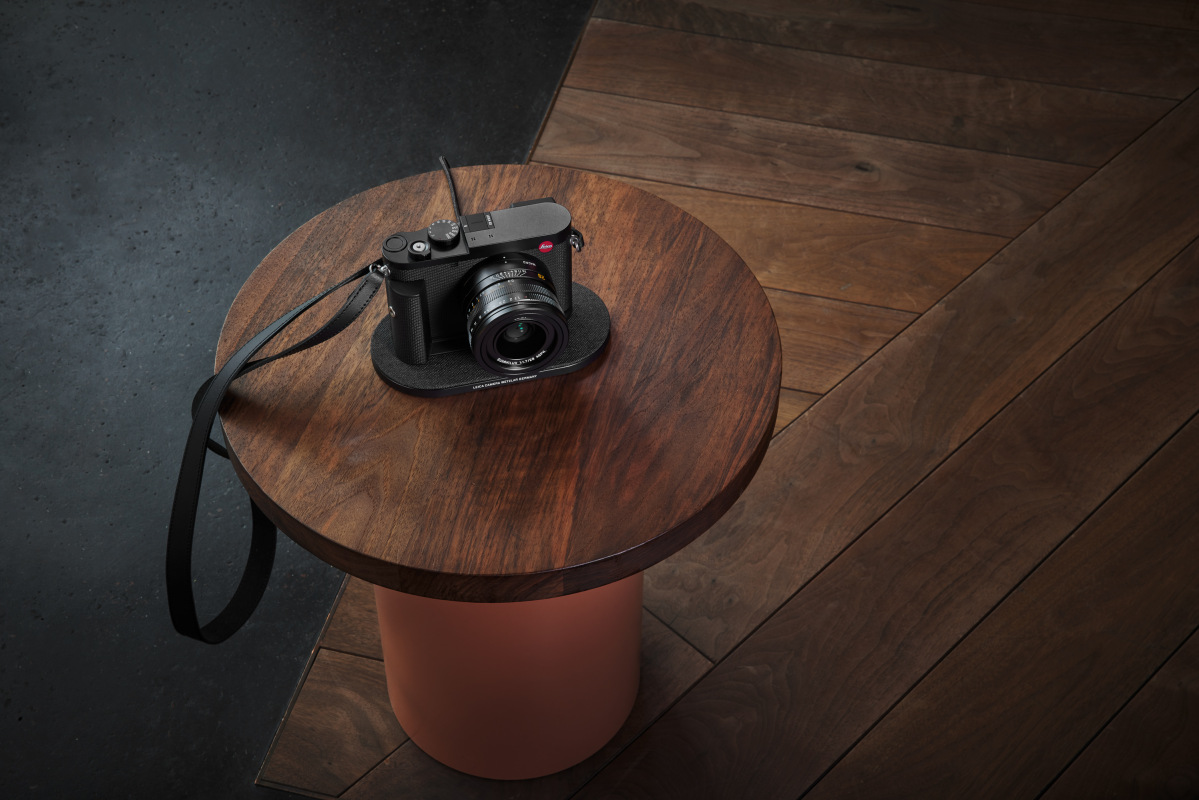
The fast Leica Summilux 28 mm f/1.7 ASPH. is an optical masterpiece. With its integrated macro mode, it allows close-up shots from a minimum focusing distance of 6.69 inches. In combination with its high-resolution sensor, this 3rd generation Q family member also offers an extended digital zoom. This allows creatives the opportunity to crop to the focal lengths of 28, 35, 50, 75 mm, and now also 90 mm. Two new and practical assistants, Leica Perspective Control (LPC) and Leica Dynamic Range (LDR), also ensure perfect JPEG images without any post-processing.
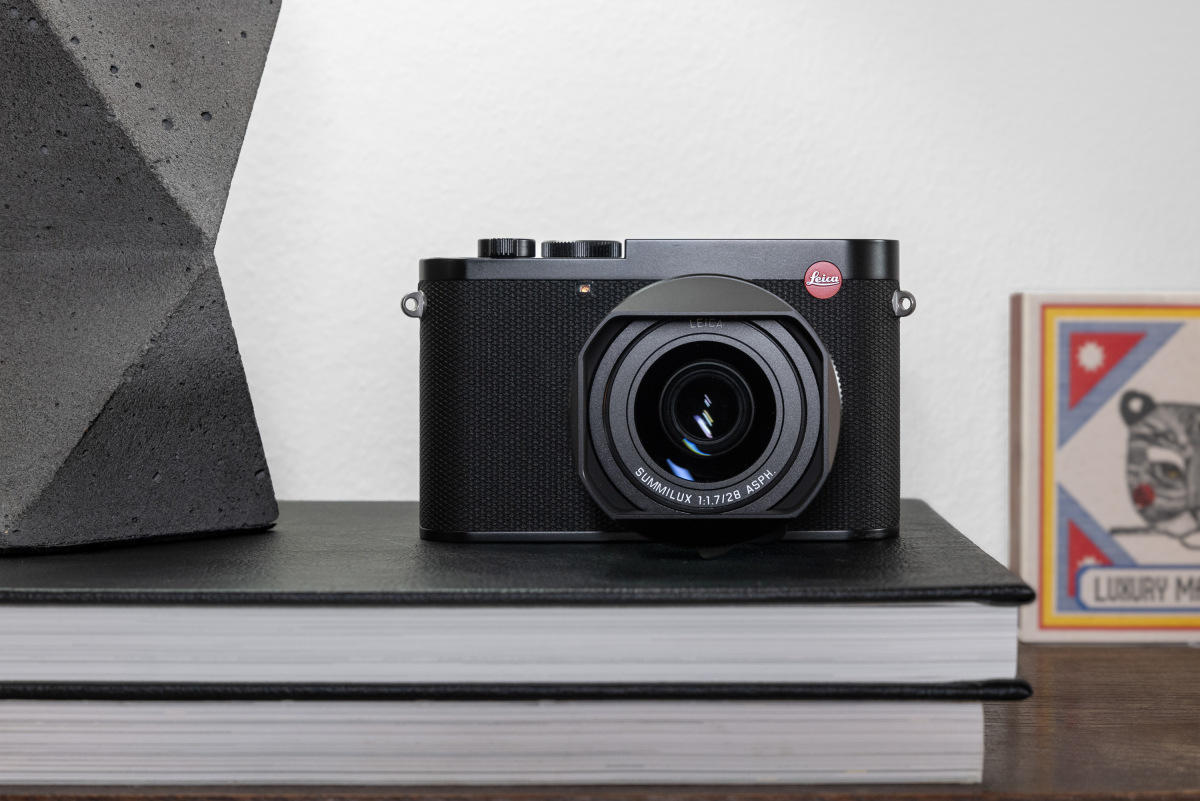
A significant development has also been made to the autofocus system of the Q3. A new hybrid autofocus system with phase detection ensures extremely fast, accurate focusing and tracking of objects, people and pets. In addition to the high-precision contrast autofocus, the DFD system and phase detection autofocus, combined with intelligent subject recognition, supports the capturing of sharp and brilliant images, all displayed crisply and clearly on the new 5.76 MP OLED viewfinder.
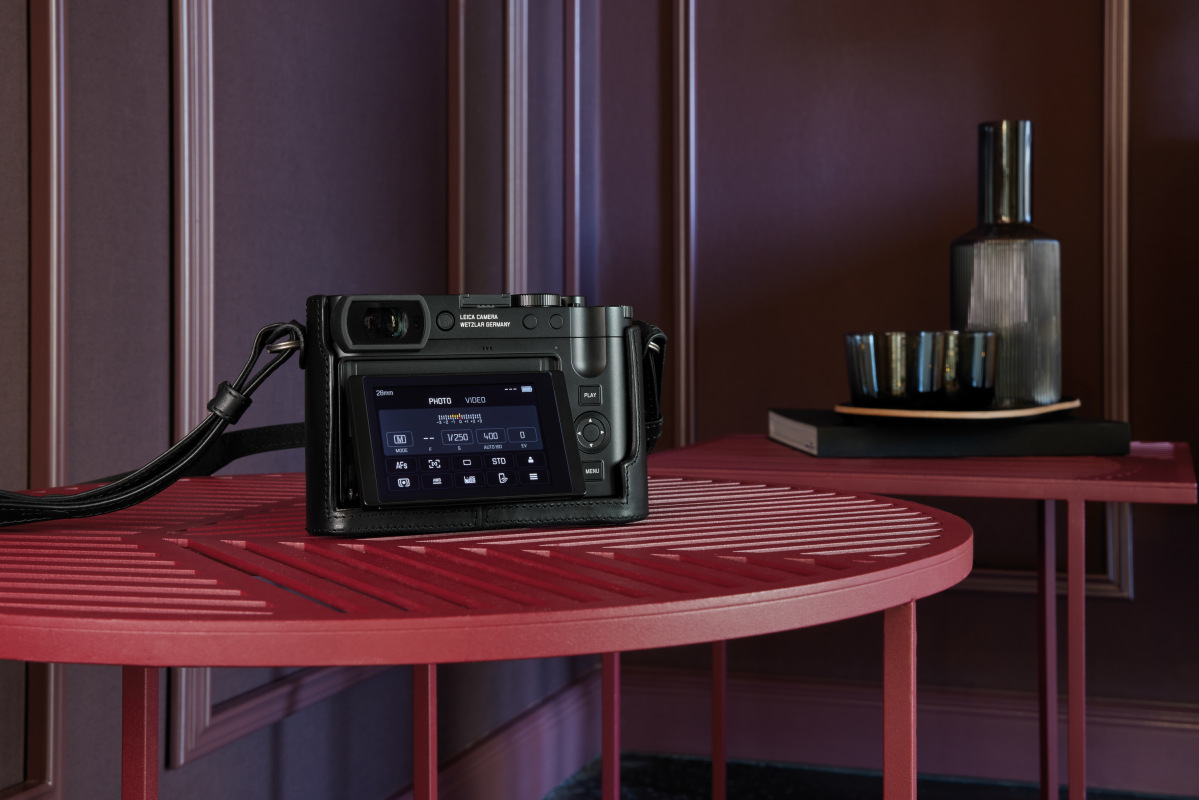
The new tiltable 3-inch high-resolution touchscreen with a high-quality tilting mechanism provides unique viewing angles and offers even more creative opportunities when taking photos and videos. Additionally, even with the movable display, the Leica Q3 still provides protection against dust and spray water thanks to its IP52 certification.
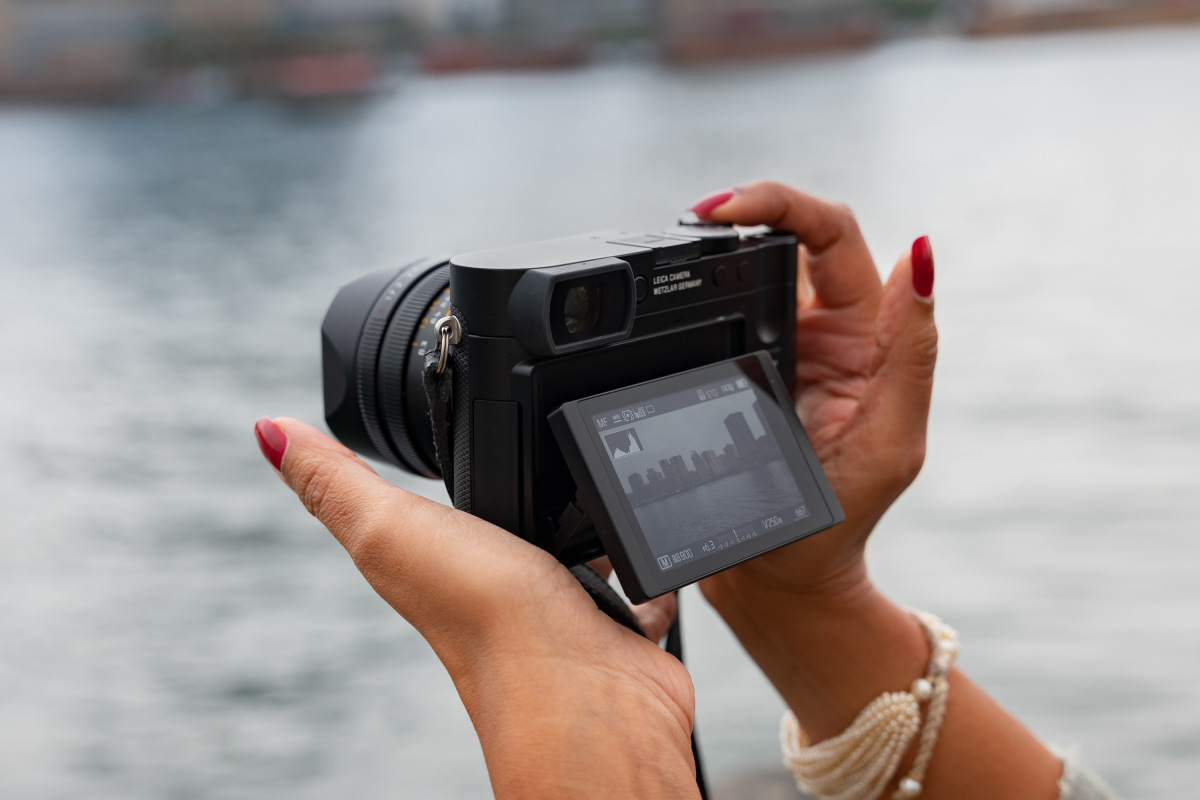
The Leica Q3 continues to impress with its seamless and fast connectivity via Bluetooth and Wi-Fi. The camera is equipped with advanced Multiple Input Multiple Output (MIMO) technology, which has increased the transfer speed to the Leica FOTOS app by up to 10 times compared to the previous model, taking mobile creative workflow to the next level. With a stable connection and high data transfer rates to the Leica FOTOS app, videos can now be loaded from the camera to a smartphone, and special ‘Leica Looks’ can be imported onto the camera for beautiful JPEG images. Various connection modes from ‘Eco’ to ‘Performance’ improve the mobile workflow and energy management of the Leica Q3. The Apple certification “Made for iPhone® and iPad®” accessory and the included Leica FOTOS cable, make the Leica Q3 the ideal tool to express the creative vision of users working with it daily.
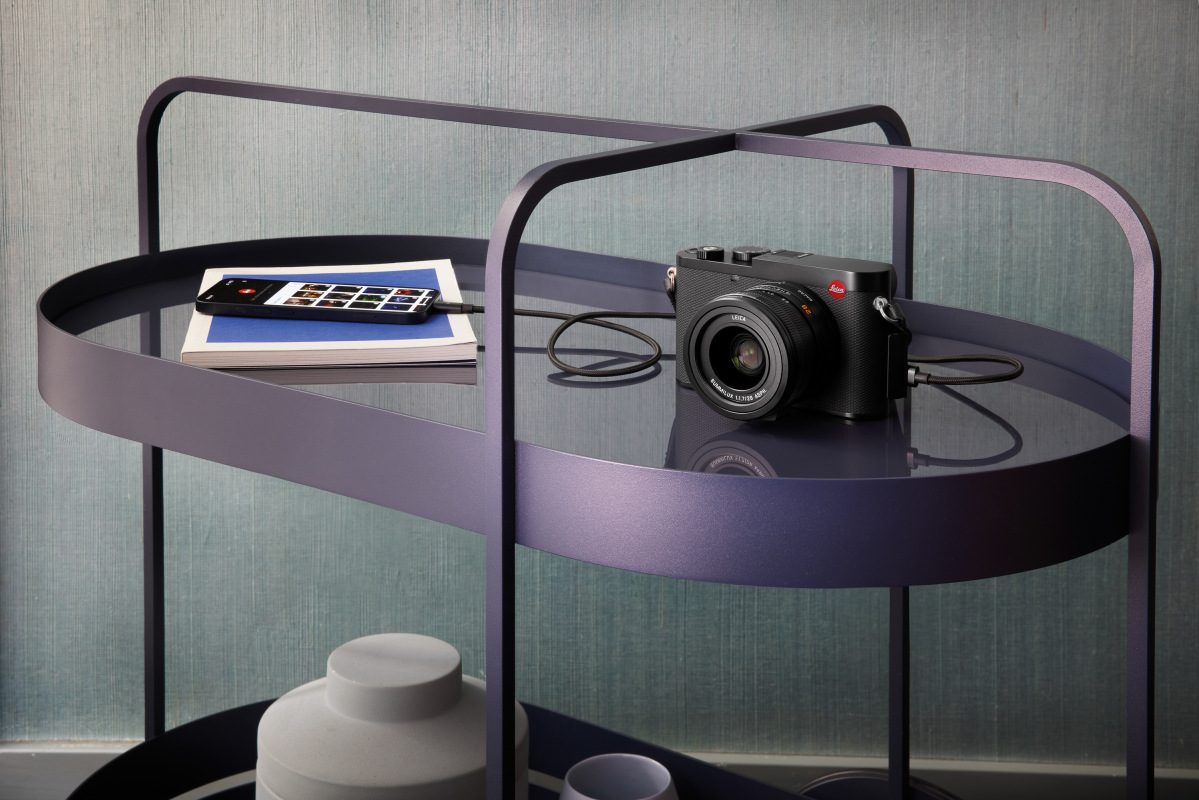
With the ability to record video at 8K resolution combined with the highly efficient codecs such as H.265 and Apple's ProRes, the powerful Leica Q3 now meets the needs of all content creators. The connection of external devices such as gimbals, powerbanks and display recorders is secured directly via the USB-C and HDMI ports. Tethered shooting with Capture One or the Adobe Lightroom plug-in is also supported via the USB-C cable connection and further enriches the fields of application for this compact digital camera.
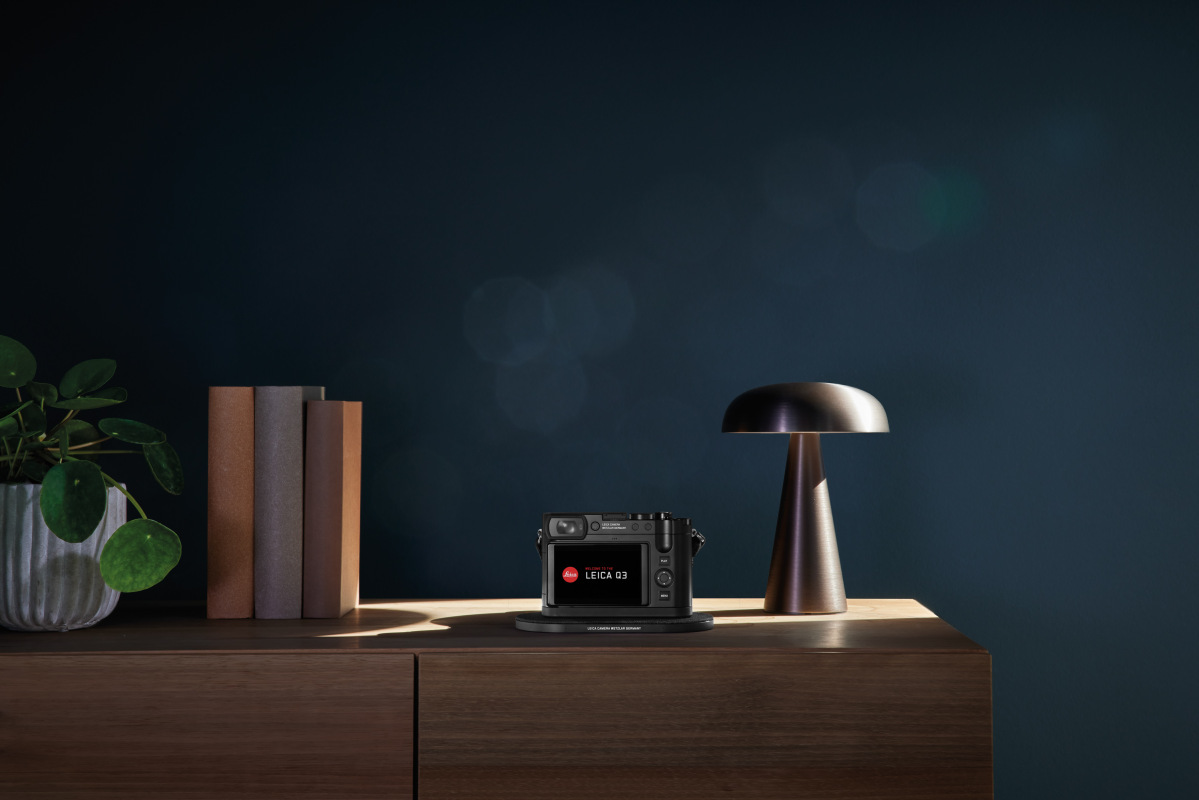
Wireless charging is also now possible with the new Leica Charging Pad and separate camera handgrip. This stylish charging pad and many other Qi-compatible devices conveniently recharges the new powerful BC-SCL6 battery of the Q3.
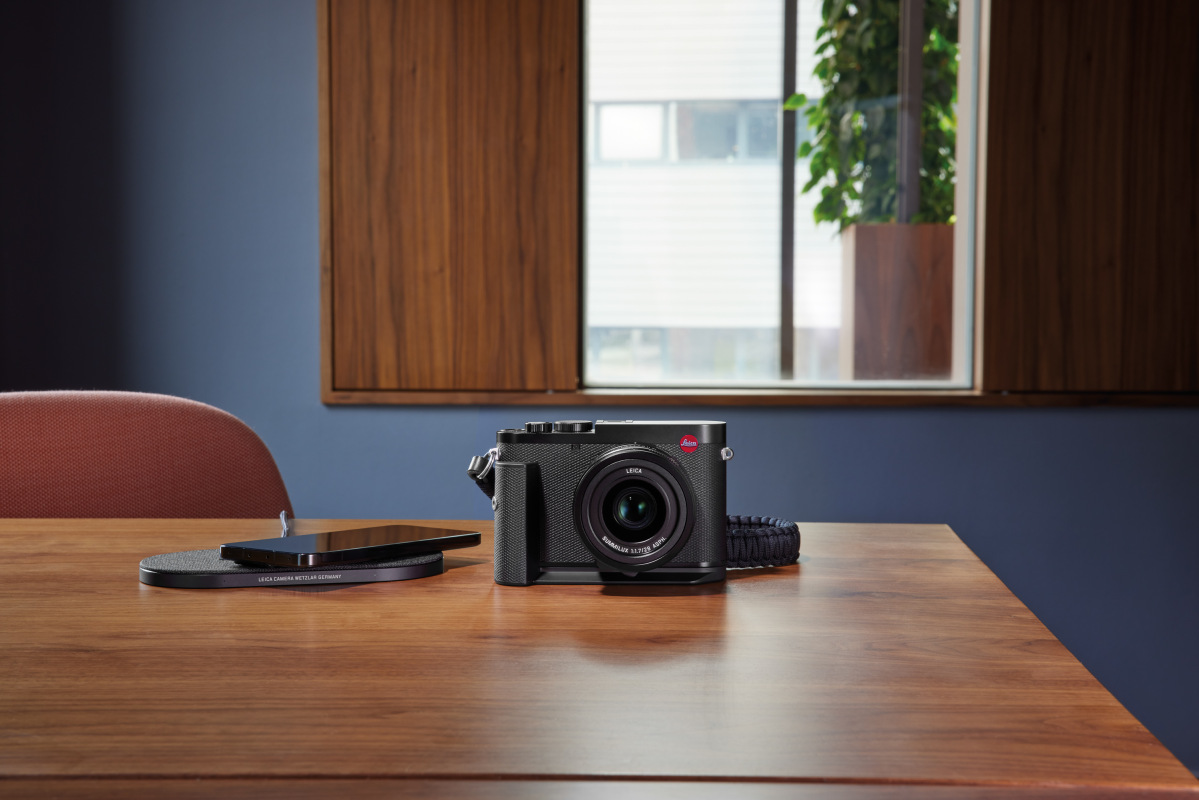
The Leica Q3 offers photographers and videographers four different function buttons which provide extended customization of the camera, while the new accessories offer versatility in the look and feel of this creative tool. Leather protectors, lens caps, retro- look lens hoods, thumb rests, soft release buttons and flash shoe covers are also available in three different colors variations.
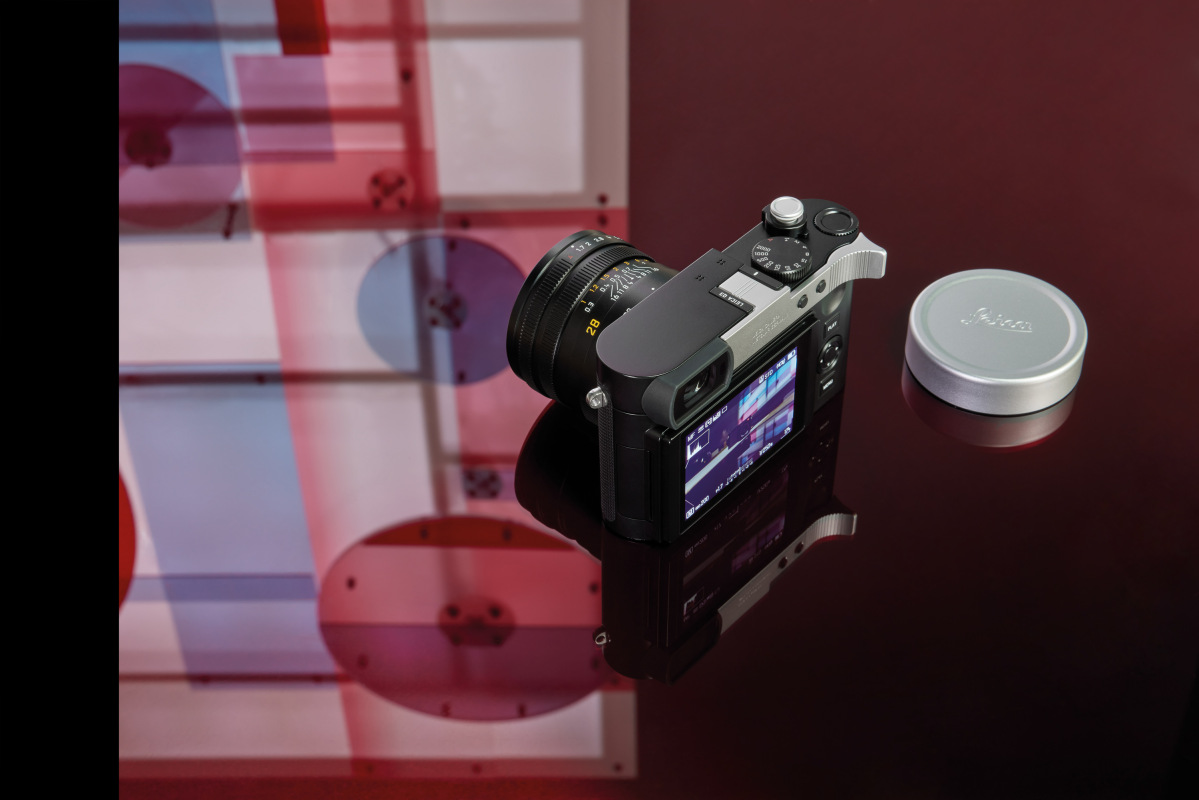
Tech Specs – Photo
| Designation | Leica Q3 |
| Camera type | Digital 35mm compact camera |
| Type No. | 6506 |
| Order No. | 19080 EU/US/CN, 19081 JP, 19082 ROW |
| Buffer memory | 8 GB |
| Frame Rate & Buffer Depth | 15 fps: 63 DNG, 63 DNG + JPG, 67 JPG 9 fps: 70 DNG, 66 DNG + JPG, 76 JPG 7 fps: 74 DNG, 69 DNG + JPG, 83 JPG 4 fps: 83 DNG, 72 DNG + JPG, 104 JPG 2 fps: 164 DNG, 88 DNG + JPG, 947 JPG |
| Storage medium | UHS-II (recommended), UHS-I, SD/SDHC/SDXC memory card |
| Material | Full metal housing: magnesium die-cast, leather covering, protection type IP52 |
| Operating conditions | 0°C to +40°C |
| Interfaces | ISO accessory shoe with additional control contacts for Leica flash units, HDMI jack Type D, USB 3.1 Gen 2 Type C up to 10 Gbps |
| Tripod thread | A 1⁄4 DIN 4503 (1⁄4”) with stainless steel in the base |
| Dimensions | 130mm wide, 80.3mm high, 92.6mm deep |
| Weight | Approx. 743 g/658 g (with/without battery) |
| Sensor | CMOS sensor, 62.39 MP/60.3 MP (total/effective) |
| Processor | Leica Maestro IV |
| Filter | RGB color filter, UV/IR filter, no low-pass filter |
| File formats | Photo: DNG™ (raw data), DNG + JPG, JPG (DCF 2.0, Exif 2.31) |
| Image resolution | |
| DNG™ | L-DNG: 9520 x 6336 pixels (60.3 MP) M-DNG: 7404 x 4928 pixels (36.5 MP) S-DNG: 5288 x 3518 pixels (18.6 MP) |
| JPG | L-JPG: 9520 x 6336 pixels (60.3 MP) M-JPG: 7392 x 4928 pixels (36.4 MP) S-JPG: 5280 x 3512 pixels (18.5 MP) |
| File size | DNG™: approx. 70 MB, depending on resolution and image content JPG: depending on resolution and image content |
| Color depth | DNG™: 14 bit, JPG: 8 bit |
| Color space | Photo: sRGB |
| Lens | Leica Summilux 28mm f/1.7 ASPH, 11 lenses in 9 segments, 3 aspherical lens areas |
| Lens filter thread | E49 |
| Digital zoom | Approx. 1.25x (equiv. to 35 mm) Approx. 1.8x (equiv. to 50 mm) Approx. 2.7x (equiv. to 75 mm) Approx. 3.2x (equiv. to 90 mm) |
| Crop Modes | 28mm: 60 MP 35mm: 39 MP 50mm: 19 MP 75mm: 8 MP 90mm: 6 MP |
| Image stabilization | Visual compensation system for photos and video recordings |
| Aperture range | f/1.7 to f/16 in 1⁄3 EV increments |
| Viewfinder (EVF) | Resolution: 5,760,000 dots, 120 fps, magnification: 0.79x at aspect ratio: 4:3 / 0.76x at aspect ratio: 3:2, frame coverage: 100%, exit pupil position: 20.75 mm, setting range -4/+2 diopter, with eye sensor for automatic switchover between viewfinder and LCD panel, time delay 0.005 s |
| LCD panel | 3” TFT LCD, approx. 1,843,200 dots, 384 ppi, aspect ratio 3:2, touch panel |
| Shutter type | Mechanical central shutter or optional electronic shutter |
| Shutter speeds | Mech. shutter: 120 s to 1⁄2000s Electro. shutter function: 1 s to 1⁄16000 s Flash Synchronization: up to 1⁄2000 s |
| Shutter button | Two-stage (1st stage: Activation of the camera electronics including autofocus and exposure metering, 2nd stage: Taking the picture) |
| Self-timer | Delay time: 2 s or 12 s |
| Drive Mode | Single, Interval Shooting, Exposure Bracketing |
| Continuous shooting | 2 fps / 14 bit / AF 4 fps / 14 bit / AF Automatic settings (exposure settings in operating modes P/A/S, automatic white balance and autofocus) are implemented individually for each frame. 7 fps / 14 bit 9 fps / 12 bit 15 fps / 12 bit Automatic settings (exposure settings in operating modes P/A/S, automatic white balance and autofocus) are implemented for the first frame, and are then applied for each subsequent frame in the same picture series. |
| Focus range | 30 cm to ∞ With macro setting: from 17 cm |
| Focus mode | Automatic or manual (With manual setting: optional magnifying glass function (Auto Magnification) and edge marking (Focus Peaking) available as focus assist) |
| Autofocus system | Hybrid-AF due to combination of contrast metering, depth mapping, and phase comparison metering with AF metering points in the sensor. |
| Autofocus modes | Intelligent AF (autonomously selects AFs and AFc), AFs, AFc, AF setting can be saved, optional Touch AF |
| Autofocus metering methods | Spot (can be shifted), Field (can be shifted and scaled), Multi-Field, Zone (can be shifted), Eye/Face/Body Detection, Eye/Face/Body + Animal Detection, Tracking |
| Autofocus metering fields | 315 |
| Exposure metering | TTL (exposure metering through the lens), with working aperture |
| Metering principle | Exposure metering is done by the image sensor for all exposure metering methods |
| Exposure metering methods | Spot, Center-Weighted, Highlight-Weighted, Multi-Field |
| Exposure modes | Program AE mode (P) Aperture-priority mode (A): manual aperture setting Shutter-priority mode (S): manual shutter-speed setting Manual (M): manual setting for shutter speed and aperture Various fully automated variants (Scene Mode): AUTO, Sport, Portrait, Landscape, Night Portrait, Snow/Beach, Fireworks, Candlelight, Sunset, Digiscoping |
| Exposure compensation | ±3 EV in 1⁄3 EV increments |
| Automatic bracketing | 3 or 5 frames, graduations between shoots up to 3 EV, in 1⁄3 EV increments additional optional exposure compensation: up to ±3 EV |
| ISO sensitivity range (Photo) | Auto ISO: ISO 100 to ISO 100,000 Manual: ISO 50 to ISO 100,000 |
| White balance | Automatic (Auto), default (Daylight, Cloudy, Shadow, Tungsten, Flash), manual metering (Gray card), manual color temperature settings (Color Temperature, 2000 K to 11500 K) |
| Flash unit connector | Via the accessory shoe |
| Flash sync time | 1⁄2000 s, slower shutter speeds available, automatic changeover to TTL linear flash mode with HSS-compatible Leica system flash units if sync time is undercut |
| Flash exposure metering | Using center-weighted TTL pre-flash metering with Leica flash units (SF 26, SF 40, SF 58, SF 60, SF 64) or with system-compatible flash units, remote controlled flash SF C1 |
| Flash exposure compensation | SF 40: ±2 EV in 1⁄2 EV increments SF 60: ±2 EV in 1⁄3 EV increments |
| Microphone | Stereo |
| Speaker | Mono |
| WLAN | WLAN function for connecting to the Leica FOTOS app. The Leica app is available from the Apple App Store™ or the Google Play Store™. |
| 2.4 GHz (EU/US/CN) | IEEE802.11b/g/n: channel 1–11 (2412–2462 MHz) |
| 5 GHz Client mode (indoor use only) | IEEE802.11a/n/ac: Channel 36–64 (5180–5320 MHz) |
| 5 GHz Access point + client mode | IEEE802.11a/n/ac: Channel 149–165 (5745–5825 MHz) |
| Bluetooth | Bluetooth 5.0 LE: Channel 0–39 (2402–2480 MHz), maximum output (e.i.r.p.): 10 dBm |
| GPS | Not available everywhere due to country-specific legislation; can be added via the Leica FOTOS app. Data is written to Exif header of the picture files. |
| Menu languages | English, German, French, Italian, Spanish, Portuguese, Russian, Japanese, Traditional Chinese, Simplified Chinese, Korean |
| Rechargeable battery (Leica BP-SCL6) | Lithium-ion rechargeable battery, rated voltage: 7.2 V (DC); capacity: 2200 mAh (min.), 350 shots (based on CIPA standard, with All Displays Auto Off = 5 s); manufacturer: Panasonic Energy (Wuxi) Co. Ltd., Made in China |
| Charger (Leica BC-SCL4) | Input: AC 100–240 V, 50/60 Hz, 0.25 A, automatic switchover; output: DC 8.4 V 0.85 A; manufacturer: Salom Electric (Xiamen) Co., Ltd., Made in China |
| Charging via USB | During operation: 9 V/3 A (min. 27 W) With camera switched off: 5 V/1500 mA (2.5 W or greater) |
| Wireless Charging | Optimal performance with 9 V chargers (10 W Charging Pad required) |
| Rated values for input voltage/power | 7.2 V 2.3 A (battery), 5 V 3.0 A / 9 V 2.5 A (USB) |
Tech Specs – Video
| Video File Formats | MP4: h.265, AAC, 48 kHz/16 bit MP4: h.264, AAC, 48 kHz/16 bit MOV: h.265, LPCM, 28 kHz/24 bit MOV: h.264, LPCM, 28 kHz/24 bit |
| Video Length | Max: 29 minutes |
| Video Resolution | C8K (17:9): 8192 x 4320 8K (16:9): 7680 x 4320 C4K (17:9): 4096 x 2160 4K (16:9): 3840 x 2160 FHD (16:9): 1920 x 1080 |
| Video frame rate/bit rate | |
| MOV C8K (recording to SD) | 29.97 fps: C8K 4:2:0/10 bit, h.265, L-GOP, 300 Mbps 25.00 fps: C8K 4:2:0/10 bit, h.265, L-GOP, 300 Mbps 24.00 fps: C8K 4:2:0/10 bit, h.265, L-GOP, 300 Mbps 23.98 fps: C8K 4:2:0/10 bit, h.265, L-GOP, 300 Mbps |
| MOV C8K (HDMI output without HLG/L-Log and without recording to SD) | 29.97 fps: 8K 4:2:0/8 bit, h.265, L-GOP, 300 Mbps 25.00 fps: 8K 4:2:0/8 bit, h.265, L-GOP, 300 Mbps 24.00 fps: 8K 4:2:0/8 bit, h.265, L-GOP, 300 Mbps 23.98 fps: 8K 4:2:0/8 bit, h.265, L-GOP, 300 Mbps |
| MOV C8K (HDMI output with HLG/L-Log or during recording to SD) | 29.97 fps: C4K 4:2:2/10 bit, h.265, L-GOP, 300 Mbps 25.00 fps: C4K 4:2:2/10 bit, h.265, L-GOP, 300 Mbps 24.00 fps: C4K 4:2:2/10 bit, h.265, L-GOP, 300 Mbps 23.98 fps: C4K 4:2:2/10 bit, h.265, L-GOP, 300 Mbps |
| MOV 8K (recording to SD) | 29.97 fps: 8K 4:2:0/10 bit, h.265, L-GOP, 300 Mbps 25.00 fps: 8K 4:2:0/10 bit, h.265, L-GOP, 300 Mbps 24.00 fps: 8K 4:2:0/10 bit, h.265, L-GOP, 300 Mbps 23.98 fps: 8K 4:2:0/10 bit, h.265, L-GOP, 300 Mbps |
| MOV 8K (HDMI output without HLG/L-Log and without recording to SD) | 29.97 fps: 8K 4:2:0/8 bit, h.265, L-GOP, 300 Mbps 25.00 fps: 8K 4:2:0/8 bit, h.265, L-GOP, 300 Mbps 24.00 fps: 8K 4:2:0/8 bit, h.265, L-GOP, 300 Mbps 23.98 fps: 8K 4:2:0/8 bit, h.265, L-GOP, 300 Mbps |
| MOV 8K (HDMI output with HLG/L-Log or during recording to SD) | 29.97 fps: 4K 4:2:2/10 bit, h.265, L-GOP, 300 Mbps 25.00 fps: 4K 4:2:2/10 bit, h.265, L-GOP, 300 Mbps 24.00 fps: 4K 4:2:2/10 bit, h.265, L-GOP, 300 Mbps 23.98 fps: 4K 4:2:2/10 bit, h.265, L-GOP, 300 Mbps |
| MOV C4K | 59.94 fps: 4:2:2/10 bit (SD & HDMI), h.264, ALL-I, 600 Mbps 50.00 fps: 4:2:2/10 bit (SD & HDMI), h.264, ALL-I, 600 Mbps 48.00 fps: 4:2:2/10 bit (SD), h.264, ALL-I, 600 Mbps *24.00 fps: 4:2:2/10 bit (HDMI), h.264, ALL-I, 600 Mbps 47.95 fps: 4:2:2/10 bit (SD), h.264, ALL-I, 600 Mbps *23.98 fps: 4:2:2/10 bit (HDMI), h.264, ALL-I, 600 Mbps 29.97 fps: 4:2:2/10 bit (SD & HDMI), h.264, ALL-I, 400 Mbps 25.00 fps: 4:2:2/10 bit (SD & HDMI), h.264, ALL-I, 400 Mbps 24.00 fps: 4:2:2/10 bit (SD & HDMI), h.264, ALL-I, 400 Mbps 23.98 fps<: 4:2:2/10 bit (SD & HDMI), h.264, ALL-I, 400 Mbps |
| MOV 4K | 59.94 fps: 4:2:2/10 bit (SD & HDMI), h.264, ALL-I, 600 Mbps 50.00 fps: 4:2:2/10 bit (SD & HDMI), h.264, ALL-I, 600 Mbps 48.00 fps: 4:2:2/10 bit (SD), h.264, ALL-I, 600 Mbps *24.00 fps: 4:2:2/10 bit (HDMI), h.264, ALL-I, 600 Mbps 47.95 fps: 4:2:2/10 bit (SD), h.264, ALL-I, 600 Mbps *23.98 fps: 4:2:2/10 bit (HDMI), h.264, ALL-I, 600 Mbps 29.97 fps: 4:2:2/10 bit (SD & HDMI), h.264, ALL-I, 400 Mbps 25.00 fps: 4:2:2/10 bit (SD & HDMI), h.264, ALL-I, 400 Mbps 24.00 fps: 4:2:2/10 bit (SD & HDMI), h.264, ALL-I, 400 Mbps 23.98 fps: 4:2:2/10 bit (SD & HDMI), h.264, ALL-I, 400 Mbps |
| MOV FHD | 119.88 fps: 4:2:2/10 bit (SD & HDMI), h.264, ALL-I, 400 Mbps 100.00 fps: 4:2:2/10 bit (SD & HDMI), h.264, ALL-I, 400 Mbps 59.94 fps: 4:2:2/10 bit (SD & HDMI), h.264, ALL-I, 200 Mbps 50.00 fps: 4:2:2/10 bit (SD & HDMI), h.264, ALL-I, 200 Mbps 48.00 fps: 4:2:2/10 bit (SD), h.264, ALL-I, 200 Mbps *24.00 fps: 4:2:2/10 bit (HDMI), h.264, ALL-I, 200 Mbps 47.95 fps: 4:2:2/10 bit (SD), h.264, ALL-I, 200 Mbps *23.98 fps: 4:2:2/10 bit (HDMI), h.264, ALL-I, 200 Mbps 29.97 fps: 4:2:2/10 bit (SD & HDMI), h.264, ALL-I, 200 Mbps 25.00 fps: 4:2:2/10 bit (SD & HDMI), h.264, ALL-I, 200 Mbps 24.00 fps: 4:2:2/10 bit (SD & HDMI), h.264, ALL-I, 200 Mbps 23.98 fps: 4:2:2/10 bit (SD & HDMI), h.264, ALL-I, 200 Mbps |
| MOV FHD Slow Motion | Sensor: 119.88 fps: 4:2:0/10 bit (SD & HDMI), h.265, L-GOP, 100 Mbps Recording/Playback: 29.97 fps: 4:2:0/10 bit (SD & HDMI), h.265, L-GOP, 100 Mbps Sensor: 100.00 fps: 4:2:0/10 bit (SD & HDMI), h.265, L-GOP, 100 Mbps Recording/Playback: 25.00 fps: 4:2:0/10 bit (SD & HDMI), h.265, L-GOP, 100 Mbps |
| MOV FHD ProRes | 59.94 fps: 422HQ, ProRes, 454 Mbps 50.00 fps: 422HQ, ProRes, 378 Mbps 29.97 fps: 422HQ, ProRes, 227 Mbps 25.00 fps: 422HQ, ProRes, 189 Mbps 24.00 fps: 422HQ, ProRes, 182 Mbps 23.98 fps: 422HQ, ProRes, 181 Mbps |
| MP4 8K (recording to SD) | 29.97 fps: 8K 4:2:0/10 bit, h.265, L-GOP, 300 Mbps 25.00 fps: 8K 4:2:0/10 bit, h.265, L-GOP, 300 Mbps 23.98 fps: 8K 4:2:0/10 bit, h.265, L-GOP, 300 Mbps |
| MP4 8K (HDMI output without recording to SD) | 29.97 fps: 8K 4:2:0/8 bit, h.265, L-GOP, 300 Mbps 25.00 fps: 8K 4:2:0/8 bit, h.265, L-GOP, 300 Mbps 23.98 fps: 8K 4:2:0/8 bit, h.265, L-GOP, 300 Mbps |
| MP4 8K (HDMI output during recording to SD) | 29.97 fps: 4K 4:2:2/10 bit, h.265, L-GOP, 300 Mbps 25.00 fps: 4K 4:2:2/10 bit, h.265, L-GOP, 300 Mbps 23.98 fps: 4K 4:2:2/10 bit, h.265, L-GOP, 300 Mbps |
| MP4 4K | 59.94 fps: 4:2:0 / 10 bit (SD & HDMI), h.265, L-GOP, 100 Mbps 50.00 fps: 4:2:0 / 10 bit (SD & HDMI), h.265, L-GOP, 100 Mbps 29.97 fps: 4:2:0 / 8 bit (SD & HDMI), h.264, L-GOP, 100 Mbps 25.00 fps: 4:2:0 / 8 bit (SD & HDMI), h.264, L-GOP, 100 Mbps 23.98 fps: 4:2:0 / 8 bit (SD & HDMI), h.264, L-GOP, 100 Mbps |
| MP4 FHD | 59.94 fps: 4:2:0 / 8 bit (SD & HDMI), h.264, L-GOP, 28 Mbps 50.00 fps: 4:2:0 / 8 bit (SD & HDMI), h.264, L-GOP, 28 Mbps 29.97 fps: 4:2:0 / 8 bit (SD & HDMI), h.264, L-GOP, 20 Mbps 25.00 fps: 4:2:0 / 8 bit (SD & HDMI), h.264, L-GOP, 20 Mbps 23.98 fps: 4:2:0 / 8 bit (SD & HDMI), h.264, L-GOP, 24 Mbps |
| ISO sensitivity range (Video) | Auto ISO: ISO 100 to ISO 100,000 Manual:ISO 50 to ISO 100,000 |

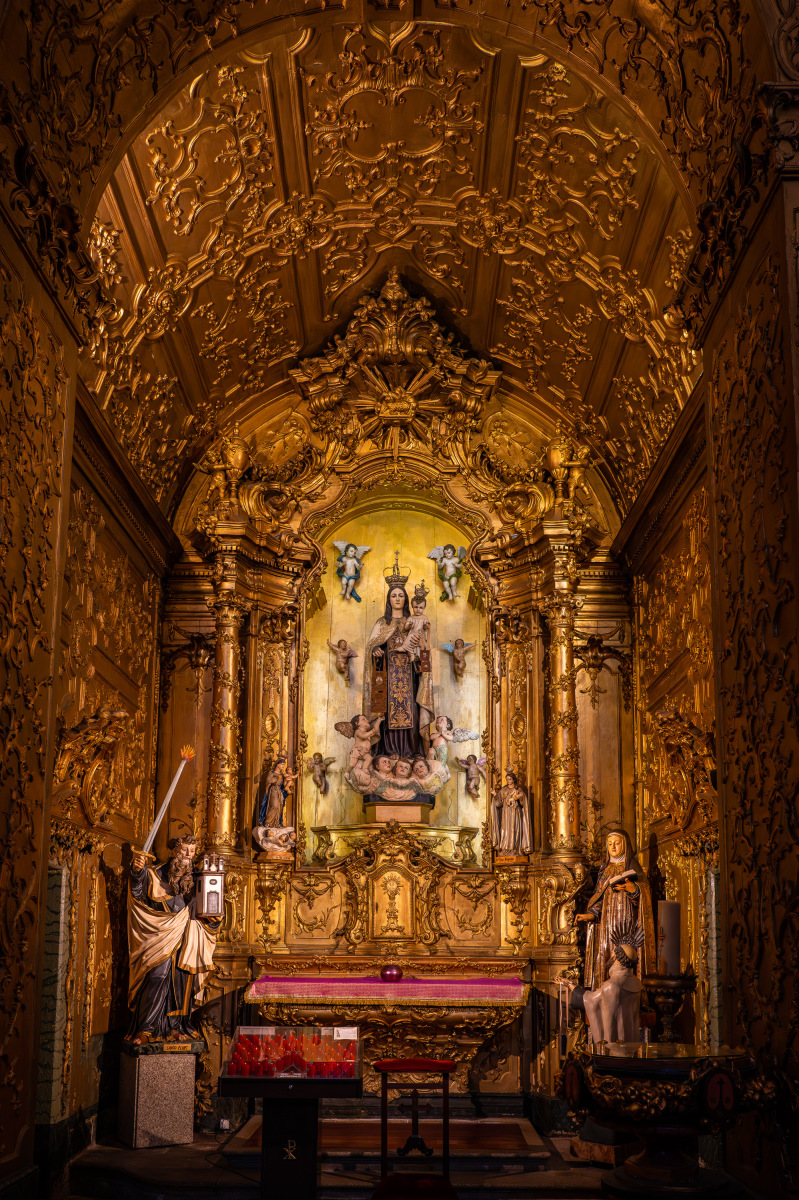
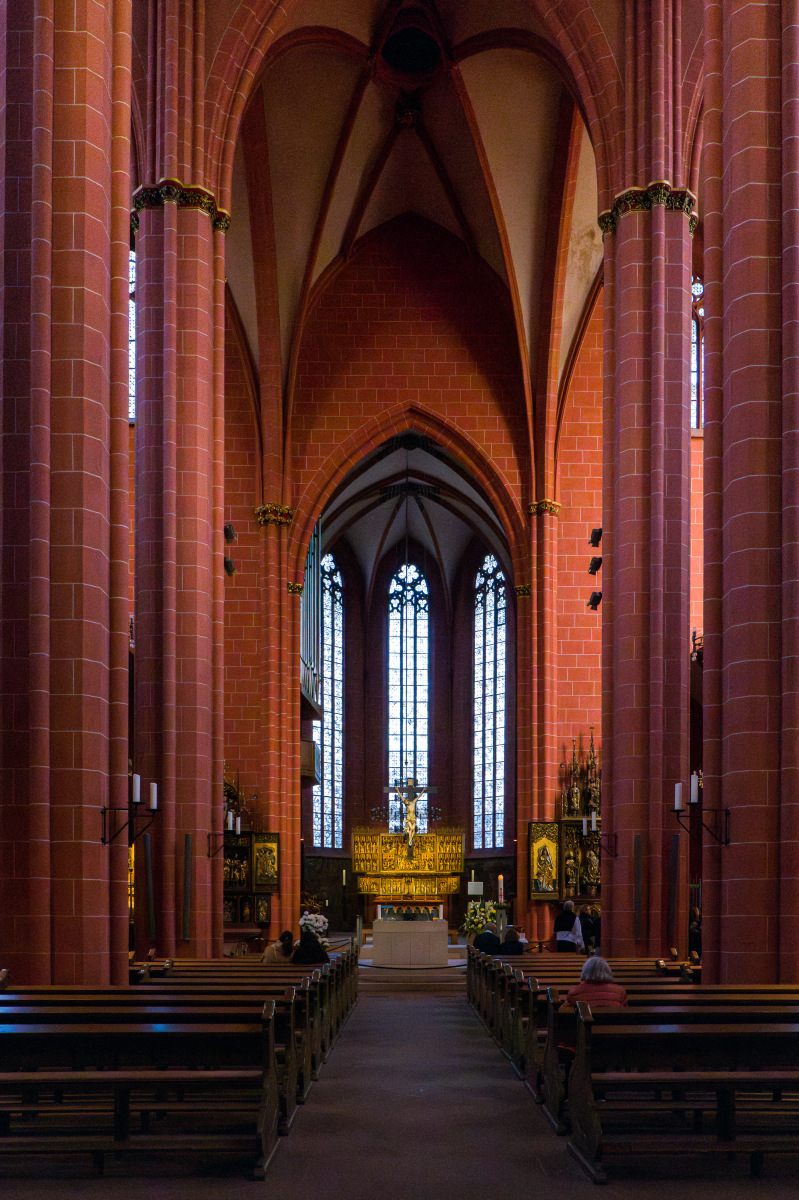
I just sold my beloved Q2 and playing with the idea of getting the Q3… that being said… in the review of the Q3 David mentions his favorite upgrade is the new autofocus… I have an SL2-S… from the looks of it, the Q3 has a new more powerful processor… curious if you think there will be a software update to the SL2 line that will get the same autofocus as the Q3?? Or maybe Leica will wait to upgrade with the Sl3 line?